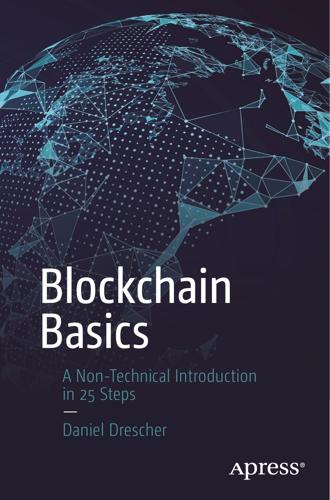
Blockchain Basics: A Non-Technical Introduction in 25 Steps
by
Daniel Drescher
Published 16 Mar 2017
However, the problem of forwarding information among peers and updating the data maintained by the members of the system stays the same, regardless of the specific application domain. Hence, on a more abstract level, the double spending problem can be seen as a problem of maintaining data consistency in distributed peer-to-peer systems. Since data consistency is one aspect of system integrity, one could say that the double spending problem is a specific example of violated system integrity. How to Solve the Double Spending Problem Because double spending can have different meanings, there is no single way to prevent it. Instead, many different solutions may exist. The following sections describe some of them.
…
Only one of them is supposed to be the new and law- ful owner. Hence, the situation is called the double spending problem. Blockchain Basics 51 The Term Similar to the term blockchain, the term double spending is ambiguous as it is used to refer to the following concepts: • A problem caused by copying digital goods • A problem that may appear in distributed peer-to-peer systems of ledgers • An example of violated integrity in purely distributed peer-to-peer systems Double Spending as a Problem of Copying Digital Goods In the context of copying digital goods, the double spending problem refers to the fact that data on a computer can be copied without noticeable limitations.
…
Besides being technically possible, the copy- ing of digital money violates the core principle of money: an identical piece of money cannot be given to different people at the same time. The ability to copy and spend digital money multiple times renders the money useless, hence, the double spending problem. Double Spending as a Problem of Distributed Peer-to-Peer Systems of Ledgers When used to describe the problem of a distributed peer-to-peer system of ledgers, double spending problem refers to the fact that forwarding informa- tion to all elements of such a system requires time, thus not all peers have the same ownership information at the same time. Because not all peers have up-to-date information, they are prone to be exploited by anyone who already has the latest information.
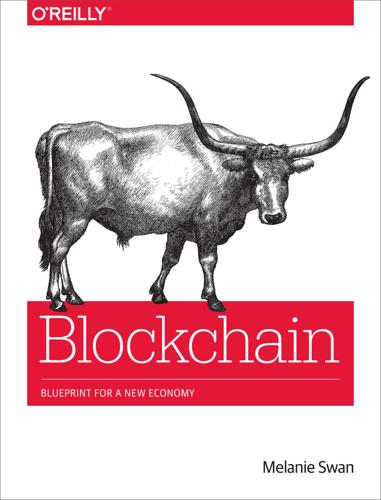
Blockchain: Blueprint for a New Economy
by
Melanie Swan
Published 22 Jan 2014
The Double-Spend and Byzantine Generals’ Computing Problems Even without considering the many possible uses of Bitcoin and blockchain technology, Bitcoin, at its most fundamental level, is a core breakthrough in computer science, one that builds on 20 years of research into cryptographic currency, and 40 years of research in cryptography, by thousands of researchers around the world.13 Bitcoin is a solution to a long-standing issue with digital cash: the double-spend problem. Until blockchain cryptography, digital cash was, like any other digital asset, infinitely copiable (like our ability to save an email attachment any number of times), and there was no way to confirm that a certain batch of digital cash had not already been spent without a central intermediary. There had to be a trusted third party (whether a bank or a quasibank like PayPal) in transactions, which kept a ledger confirming that each portion of digital cash was spent only once; this is the double-spend problem. A related computing challenge is the Byzantine Generals’ Problem, connoting the difficulty of multiple parties (generals) on the battlefield not trusting each other but needing to have some sort of coordinated communication mechanism.14 The blockchain solves the double-spend problem by combining BitTorrent peer-to-peer file-sharing technology with public-key cryptography to make a new form of digital money.
…
A related computing challenge is the Byzantine Generals’ Problem, connoting the difficulty of multiple parties (generals) on the battlefield not trusting each other but needing to have some sort of coordinated communication mechanism.14 The blockchain solves the double-spend problem by combining BitTorrent peer-to-peer file-sharing technology with public-key cryptography to make a new form of digital money. Coin ownership is recorded in the public ledger and confirmed by cryptographic protocols and the mining community. The blockchain is trustless in the sense that a user does not need to trust the other party in the transaction, or a central intermediary, but does need to trust the system: the blockchain protocol software system.
…
If enough other members support the proposition, it moves on to a discussion phase, at which point it can be modified and alternatives put forward. Of the proposals that are offered, those with enough support are put up for a vote. A vote is made using the Schultz method of preferential voting, which ensures that votes are not split by almost identical “cloned” proposals (like double-spend problem for votes). All of this is coordinated in the online platform. The voting system can run at different levels of transparency: disclosed identity, anonymity, or a hybrid system of authenticated pseudonymity. An unresolved issue is how binding decisions made by the Liquid Democracy system might be and what enforcement or follow-up mechanisms can be included in the software.

The Truth Machine: The Blockchain and the Future of Everything
by
Paul Vigna
and
Michael J. Casey
Published 27 Feb 2018
“I’d prefer that fans got hold of the music and shared it”: “Imogen Heap—Future Music—PART 1/2, London Real,” YouTube channel, December 27, 2015, https://www.youtube.com/watch?v=IkLrdRx0F6w. What the blockchain could do, argues Lance Koonce: Lance Koonce, “Copyright’s ‘Double Spend’ Problem: Digital First Sales,” Medium, April 27, 2016, https://medium.com/creativeblockchain/copyrights-double-spend-problem-digital-first-sales-f18c586612b9. “The Creative Commons dataset is incredibly fractured”: Mediachain founder Jesse Walden, phone interview with Michael J. Casey, March 25, 2017. But in general, says Mediachain’s Walden: ibid. The coin would be issued to owners: Tim Gosselin, “A New Cryptocurrency to Reward Creative Commons Creators,” mediachain.io, March 9, 2017, https://blog.mediachain.io/a-new-cryptocurrency-to-reward-creative-commons-creators-e41e1791c4c0.
…
In pursuit of that goal, the aforementioned “Cypherpunks”—a loose association of programmers with a fiercely libertarian bent who were obsessed with using cryptography to protect privacy online—and other Internet adventurers toyed with private cryptocurrency concepts, while banks and governments stealthily experimented with sovereign currency-based e-cash. (In The Age of Cryptocurrency, we reported on one little-known e-cash pilot that the U.S. Treasury Department explored in conjunction with Citibank.) These early digital currencies were bedeviled by the “double-spend” problem mentioned above—rogue users could always find ways to duplicate their currency holdings. Overcoming this was vital because, whereas we might happily make a copy of a Word document and send it to someone, digital counterfeiting of this kind would destroy any monetary system’s inherent value.
…
Meanwhile, card-issuing banks beefed up their anti-fraud monitoring efforts. A version of the “trusted third party” was added to our complicated system of global value exchange. It was another jury-rigged solution that meant that the banking system, the centralized ledger-keeping solution with which society had solved the double-spend problem for five hundred years, would be awkwardly bolted onto the ostensibly decentralized Internet as its core trust infrastructure. With customers now sufficiently confident they wouldn’t be defrauded, an explosion in online shopping ensued. But the gatekeeping moneymen now added costs and inefficiencies to the system.
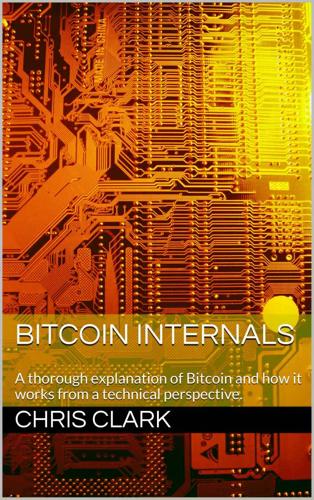
Bitcoin Internals: A Technical Guide to Bitcoin
by
Chris Clark
Published 16 Jun 2013
Chapter 4 Digital Currencies 4.1 Properties A secure digital payment system should have the following properties to prevent fraud: Authenticity - Only the owner of a quantity of money can spend it Security - Money can not be counterfeited (token forgery), and the owner can only spend it once (the "double-spending" problem) Nonrepudiation - A recipient cannot deny receiving money Nonrepudiation is not as crucial as the other two, but if the system did not have this property, it would be impossible to arbitrate disputes in which a seller denied receiving payment and refused to provide the merchandise. There are also three optional properties that make the system more powerful:9 Anonymous - payer identification is not disclosed to payee or third parties (this can be broken down into three components: payer anonymity, untraceability, and unlinkability) Offline - payee can be confident that they will receive funds from a transaction without immediately contacting a third party such as a bank Decentralized - there is no trusted authority (e.g. bank) needed to process transactions Digital cash is defined to be any digital payment system that satisfies properties 1-4.[11] Bitcoin doesn’t completely satisfy property 4, so it is not technically digital cash, but it is close because it is pseudonymous. 4.2 Double-Spending All electronic payment systems rely heavily on cryptography.
…
If his bank had really bad security, both sites would see that he had $100 in his account and approve the purchase, yielding $200 worth of goods. This is a double-spend. For online centralized systems such as credit cards, detecting double-spending is easy since all transactions are seen immediately. For offline or decentralized systems, however, it is more difficult. Solving the double-spending problem is the main hurdle that digital payment systems need to overcome. The tricky part about double-spending is that each payment would be completely legitimate if the other didn’t exist. The only way to detect double-spending is to be aware of all transactions and look for duplicates. After detecting a double-spend, there are a couple of options.
…
Transactions are then held in pools on the nodes awaiting insertion into the block chain, which is a public record of all transactions that have ever occurred in the Bitcoin network. The block chain is not just a simple list of transaction receipts though. It is specially designed to solve the double-spending problem for a peer-to-peer network of untrusted nodes. As discussed in the Double-Spending section, the goal is to determine the chronological ordering of transactions so that the first payment can be accepted and the second payment can be rejected. So the peer-to-peer network has to have a method to agree on an ordering of transactions even though some peers might be trying to sabotage the system.

Mastering Blockchain, Second Edition
by
Imran Bashir
Published 28 Mar 2018
Note that Bitcoin with a capital B is used to refer to the Bitcoin protocol, whereas bitcoin with a lowercase b is used to refer to bitcoin, the currency. Decentralization of currency was made possible for the first time with the invention of bitcoin. Moreover, the double spending problem was solved in an elegant and ingenious way in bitcoin. Double spending problem arises when, for example, a user sends coins to two different users at the same time and they are verified independently as valid transactions. The double spending problem is resolved in Bitcoin by using a distributed ledger (blockchain) where every transaction is recorded permanently and by implementing transaction validation and confirmation mechanism.
…
Just as understanding the concept of distributed systems is necessary to comprehend blockchain technology, the idea of electronic cash is also essential in order to appreciate the first and astonishingly successful application of blockchain, Bitcoin, or more broadly cryptocurrencies in general. Two fundamental e-cash system issues need to be addressed: accountability and anonymity. Accountability is required to ensure that cash is spendable only once (double-spend problem) and that it can only be spent by its rightful owner. Double spend problem arises when same money can be spent twice. As it is quite easy to make copies of digital data, this becomes a big issue in digital currencies as you can make many copies of same digital cash. Anonymity is required to protect users' privacy. As with physical cash, it is almost impossible to trace back spending to the individual who actually paid the money.
…
We have copyright protection in place for many years, but digital piracy refutes all attempts to fully enforce the law on a blockchain, however, if you own an asset, no one else can claim it unless you decide to transfer it. This feature has far-reaching implications, especially in DRM and electronic cash systems where double-spend detection is a crucial requirement. The double-spend problem was first solved without the requirement of a trusted third party in Bitcoin. Provider of security: The blockchain is based on proven cryptographic technology that ensures the integrity and availability of data. Generally, confidentiality is not provided due to the requirements of transparency.

Blockchain Revolution: How the Technology Behind Bitcoin Is Changing Money, Business, and the World
by
Don Tapscott
and
Alex Tapscott
Published 9 May 2016
It can’t exist in both places, let alone multiple places. And so there’s a risk of your spending a unit of digital currency in two places and having one of them bounce like a bad check. That’s called the double-spend problem. That’s good for fraudsters who want to spend their money twice. It’s bad for the recipient of the bounced amount and bad for your reputation online. Traditionally, when making online payments, we solve the double-spend problem by clearing every transaction through the central databases of one or many third parties, such as a money transfer service (like Western Union), a commercial bank (Citicorp), a government body (Commonwealth Bank of Australia), a credit card company (Visa), or an online payment platform (PayPal).
…
Traditionally, when making online payments, we solve the double-spend problem by clearing every transaction through the central databases of one or many third parties, such as a money transfer service (like Western Union), a commercial bank (Citicorp), a government body (Commonwealth Bank of Australia), a credit card company (Visa), or an online payment platform (PayPal). Settlement can take days or even weeks in some parts of the world. Breakthrough: Satoshi leveraged an existing distributed peer-to-peer network and a bit of clever cryptography to create a consensus mechanism that could solve the double-spend problem as well as, if not better than, a trusted third party. On the bitcoin blockchain, the network time-stamps the first transaction where the owner spends a particular coin and rejects subsequent spends of the coin, thus eliminating a double spend. Network participants who run fully operating bitcoin nodes—called miners—gather up recent transactions, settle them in the form of a block of data, and repeat the process every ten minutes.
…
A new start-up, Ascribe, enables artists themselves to upload digital art, watermark it as the definitive version, and transfer it so that, like bitcoin, it moves from one person’s collection to another’s. That’s huge. The technology solves the intellectual property world’s equivalent of the double-spend problem better than existing digital rights management systems, and artists could decide whether, when, and where they wanted to deploy it. Meme artist Ronen V said, “Art is a currency. The evolution of art into digital currency is—no question—the future. And this is a good step.”23 Musicians, photographers, designers, illustrators, or other artists whose work could be digitized and watermarked as a definitive copy could use this technology to transform their intellectual property into a tradable asset, a limited edition perhaps customized for a particular fan.

The Future Is Faster Than You Think: How Converging Technologies Are Transforming Business, Industries, and Our Lives
by
Peter H. Diamandis
and
Steven Kotler
Published 28 Jan 2020
In simpler terms, blockchain is an enabling technology, one that began its life by enabling digital currency. Digital currencies, or the notion that we can use ones and zeroes to replace dollars and cents, were first proposed in 1983. Yet the idea was stymied by the seemingly intractable “double-spending problem.” In a nutshell: If you have a dollar bill and give it to a friend, then your friend has the dollar bill. If you have a digital dollar bill and give it to a friend—if the core of that currency is nothing more than ones and zeroes—then what’s to stop you from giving that friend a copy of the dollar bill and keeping the original for yourself.
…
If you have a digital dollar bill and give it to a friend—if the core of that currency is nothing more than ones and zeroes—then what’s to stop you from giving that friend a copy of the dollar bill and keeping the original for yourself. After all, this is exactly how all other digital sharing works. When you send an email, your computer stores the original and sends a copy. This is fine for exchanging letters, but it’s lousy for trading money. This is the double-spending problem and it’s exactly what bitcoin was designed to solve. Bitcoin appeared in 2008, when an online paper authored by a still-anonymous person (or persons) calling themselves Satoshi Nakamoto proposed a digital peer-to-peer payment system that allows cash to be exchanged without the need for a financial institution.
…
Mutable means that anytime anyone enters new information in the ledger, all ledgers change. It’s permissible in the same way that cash is permissible—anyone can use it. Finally, the system is transparent because everyone on the network can see every transaction on the network—which is how the double-spend problem was actually solved. The real innovation, though, is how transactions are recorded in the ledger. In normal financial exchanges, when money is moved around, a trusted third party is needed: If I cut you a check, it’s a third party, typically a bank, who ensures I have the cash to cover it.

Easy Money: Cryptocurrency, Casino Capitalism, and the Golden Age of Fraud
by
Ben McKenzie
and
Jacob Silverman
Published 17 Jul 2023
Each “block” contains the cryptographic hash (a short, computable summary of all the data in it) of the prior block, linking the two and creating an irreversible record, a ledger composed of blocks of data that can be added to a chain (blockchain), but never subtracted from. So far so good, but one issue remained: what’s known as the double spend problem. If you remove a centralized authority from the equation, how do you make sure people aren’t gaming the system by spending money that’s already been sent somewhere else? How do you secure the network against manipulation? “Satoshi” relied on what’s called a consensus algorithm. A consensus algorithm is a process by which people with differing views can reach limited agreement about an outcome over time.
…
Advocates say this is a temporary problem; if more people would just buy Bitcoin, eventually it will become a currency you can actually use. That’s wrong for many reasons, but I’ll focus on the simplest one for now: The technology behind Bitcoin sucks. It doesn’t scale. Satoshi’s solution to the double spend problem was innovative, but also clunky. The more miners who entered the competition the more energy was used, but the blocks were the same. Bitcoin is able to handle only five to seven transactions a second; it can never go above that. Visa can process 24,000. To operate, Bitcoin uses an enormous amount of energy, the equivalent in 2021 of Argentina—the entire country.
…
See specific topics Cultish (Montell) Damon, Matt Davidson, Warren Davies, Dan Davies, Kyle decentralized autonomous organizations (DAOs) decentralized finance (DeFi) Dell, Michael Democratic Party Devasini, Giancarlo Dietderich, Andrew Digital Assets and Registered Exchanges Act (DARE) Digital Commodities Consumer Protection Act (DCCPA) DiPascali, Frank Dirty Bubble Media (James Block) Dogecoin Do Kwon Donalds, Byron Dorsey, Jack double spend problem Duffy, Sean Duffy, Terry D’Urso, Joey effective altruism (EA) Effective Altruism Forum eGold Ellison, Caroline El Salvador Emmer, Tom Enron Escobar, Carmen Valeria Ethereum EthereumMax Eun Young Choi “Even Donald Trump Knows Bitcoin Is a Scam” (Silverman) Excapsa exchange-traded funds (ETFs) Extraordinary Popular Delusions and the Madness of Crowds (MacKay) Faux, Zeke Federal Bureau of Investigation (FBI) Federal Deposit Insurance Corporation (FDIC) Federal Reserve Federal Trade Commission financial crisis (2008) Financial Times FOMO (fear of missing out) Forbes forex trading Fortune fraud.
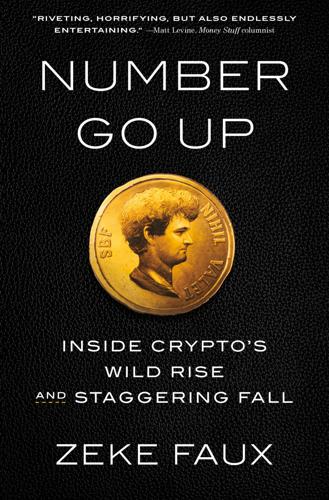
Number Go Up: Inside Crypto's Wild Rise and Staggering Fall
by
Zeke Faux
Published 11 Sep 2023
Bitcoin was especially dependent on volunteers because of the system Nakamoto had devised to protect the list. The problem was that someone could try to spend the same Bitcoins twice at the same time—more or less cutting and pasting money. The solution that Bitcoin uses to prevent this “double-spending problem” is called “mining,” and it’s incredibly complicated and confusing. It also uses so much electricity that the White House has warned it might prevent the United States from slowing climate change. It’s like something out of the world’s most boring dystopian science-fiction movie. I will attempt to explain.
…
See non-fungible tokens (NFTs) Digital Assets and Registered Exchanges Bill (Bahamas, 2020), 77 Digital Entertainment Network (DEN), 32–33 “digital gold,” 21 Dimon, Jamie, 237 Dogecoin, 5, 10 Dong, Zhao, 170 Dorsey, Jack, 16, 144 “double-spending problem,” 18 Dr. Bombay, 157–158 Dr. Scum, 150, 158, 159 “the Drowning Child” thought experiment, 81 Drudge Report, 10 drugs at ApeFest, 152, 157 Crypto Capital and, 62 cryptocurrencies and, 19, 28 in Puerto Rico, 116 traffickers in Bahamas, 77 DuckTales, 55–56 E Eagle, Ryan, 100 earning to give, 82–83 Economic Club of New York, 78–79 The Economist, 168 effective altruism movement Alameda and, 86, 223 Bankman-Fried and, 73, 75, 81, 83, 91–92 beginning of, 82 described, 73, 92 “the Drowning Child” experiment and, 81 earning to give, 82–83 Ellison and, 85–86 FTX’s bankruptcy and, 216 Future Fund, 228–229, 231 risk and, 223–224 Singh and, 85 Wang and, 85 e-gold, 37 Eisenberg, Avi, 238 electricity used by “mining,” 18, 20 El Faro, 199 Ellison, Caroline background, 85–86 Celsius and, 164 as cooperating witness against Bankman-Fried, 235 market strategy of, 225 move to Hong Kong by, 223 relationship with Bankman-Fried, 228 run on Alameda Research and, 226 El Salvador Bitcoin as official currency of, 199–201, 202–204 Bitcoin City plan, 201–202 El Zonte, 202–203 Mallers and, 26 Tether in, 203 El Zonte, El Salvador, 202–203 Eminem, 142, 157 environment and “mining,” 20 EOS, 49, 64 Ethereum, 49, 113, 127, 159 EverQuest, 33, 34 F Facing Up to Scarcity: The Logic and Limits of Nonconsequentialist Thought (Fried), 81–82 Fallon, Jimmy, 141, 158 FBI Bitcoins stolen from Bitfinex, 105–107 cryptocurrency cases and, 105 Devasini and Bitcoins seized by, 109 Felch, Alpheus, 71 Ferrell, Will, 17 “fiat money,” 16 Financial Investigation Agency (British Virgin Islands), 12 Financial Times, 138 Fireblocks, 103 Five Star Movement, 44 FODL Finance, 110 Forbes, 3, 74–75, 99, 168 Fortune, 168 Founders Fund, 29 Fried, Barbara, 81–82 FTT, 214, 216 FTX ability to trade “on margin” on, 224, 232 Alameda Research as liquidity provider to, 224 Axie Infinity and, 124 Bankman-Fried on reason for failure of, 232, 233 bankruptcy declaration by, 216, 218 Binance and, 79 Bored Apes and, 154–155 Devasini’s refusal to make loan to, 231 endorsements of, 89–90 founding of, 87 headquarters of, 23 loan to Alameda Research, 223, 226 “mis-accounting” of funds, 228 naming rights for Miami Heat’s NBA arena, 15, 23, 89 “pig butchering” and, 231 professional video-gaming team sponsorship, 89 relocation to Bahamas of, 77–78 revenues, 79 run on, 214–215 success of, 88 Tether and, 23 venture capital and, 74, 89 Yuga Labs and, 154–155 Zhao and, 213, 215–216 Future Fund, 228–229, 231 Fuxa, Marco, 42, 47 G Galois Capital, 236 Gambaryan, Tigran, 105 Gambling Apes, 159 GameStop, 10 García, Mario, 202–203 “Gargamel,” 144 “gas fees,” 149 Gemini, 166 Genesis Global, 166 George, Errol, 12 Gerard, David, 167 “Gilfalicious” (Morgan), 99 Glenn, Martin, 241 Global Anti-Scam Organization, 175–176, 178 “gold farmers,” 34 Goldman Sachs and IGE, 34 “Gordon Goner,” 144, 156 Green, Seth, 146 Greenberg, Andy, 98 Grillo, Beppe, 44 H hedge funds.
…
See also Celsius Network basic facts about, 24, 109–110 on Celsius’s interest rates, 161 CEL token, 118 DeFi and, 114–115 on safety of Celsius, 117, 164 on stablecoins, 24, 25 Stone and, 110, 112–113, 116, 240, 241 Tether loan to Celsius and, 109 on Tether’s investment and loan to Celsius, 25 MasterCoin, 34–36, 90 Matuszewski, Dan, 27 Maurer, David, 177 Mayweather, Floyd, Jr., 51 McCormick, Packy, 124 Mech Dara as scam compounds guide, 192–195, 196, 198, 199 basic facts about, 191 story about Chinatown, 197 Messika, Lior, 151–152 MetaMask, 147–148, 149 Method Man, 114 Miami Bitcoin 2021 conference, 13, 14–16, 208 naming rights to Heat’s NBA arena, 15, 23, 89 proposed use of Bitcoin by, 15 MicroStrategy, 22–23, 167 Miller, Von, 142 “mining” electricity used by, 18, 20 pollution produced by, 20 process of, 19 as solution to “double-spending problem,” 18 Monaco, Lisa, 107 money laundering Bahamas as haven for, 76–77 cryptocurrency exchanges and, 61, 62 in Switzerland, 209 Tether and, 27, 37, 170–171, 199 “Moon n Stars” (Morgan), 106 MoonPay, 154 Morgan, Heather basic facts about, 98–101, 106–107 on social engineering, 103 Movsisyan, David, 159–160 Mt.

Machine, Platform, Crowd: Harnessing Our Digital Future
by
Andrew McAfee
and
Erik Brynjolfsson
Published 26 Jun 2017
As Bitcoin transactions happened, Nakamoto proposed, they would all be recorded in a ledger that logged exactly which Bitcoins were spent and the pseudonymous identity of both the buyer and the seller, as verified by their signatures. How Do We Get This Information to Stop . . . Behaving like Information? A universal, easily consultable ledger was essential for the Bitcoin system in order to deal with the “double spend problem.” This problem arises because Bitcoins are purely and only pieces of information, yet it’s essential that they not all follow the free, perfect, and instant economics of information goods that we discussed in Chapter 6. If Bitcoins could be freely, perfectly, and instantly copied, forgery would be rampant.
…
If Bitcoins could be freely, perfectly, and instantly copied, forgery would be rampant. Bad actors, protected by their pseudonyms, would spend the same coins over and over until they were caught, merchants would get cheated, trust would evaporate, and the system would very quickly collapse. A trusted, universally accessible online ledger would solve the double spend problem by enabling merchants (or anyone else) to verify that a prospective buyer actually has the Bitcoins they say they do, and that they haven’t been already spent anywhere else. But who should be responsible for creating, maintaining, and ensuring the integrity of this ledger? It can’t be a bank or credit card company, or combination of them, because the whole point of the system proposed by Nakamoto is that it wouldn’t rely at all on existing financial institutions.
…
Shaw, 267 Dean, Jeff, 77 “Decentralize All the Things” (Evans), 296–97 “decentralizing all the things,” 278–300 Bitcoin, 279–88, 305–7 blockchain, 283–95 crypto assault on the core, 295–99 DAO and, 302–5 failure modes of, 317–19 as solution to problem of corporate dominance, 308–9 deep learning systems, 76–79, 84 DeepMind, 4, 77–78 deep Q-network (DQN), 77n Deep Thunder, 121 Defense Department, US, 103–4 delivery services, 184–85 demand in two-sided networks, 215 and Uber pricing, 218–19 demand curves, 153–54 complements’ effect on, 157–61 and open platforms, 164 and revenue management, 183 for services with perishing inventory, 181 Stripe and, 173 in two-sided networks, 215 and Uber’s driver app, 214 demand-side economies of scale, 141 Deming, David, 321, 322 demographic data, 48–51 depreciation, 187 design, computer’s role in creative aspects of, 111–18 de Soto, Hernando, 291 Devine, Warren, Jr., 20 diagnosis, medical, 123–24 Diamond, Neil, 134 digital cameras, 131 digital copies, analog copies vs., 136 digital redlining, 46–47 digital signatures, 280 Dippenaar, Liam, 273, 274 Dippenaar, Yolandi, 273 discounts, for perishing inventory, 180–81 disruption, technologies of, 307–9 disruptive technology electricity as, 22 limits to, 221–24 distributed ledger, 288–91 Dixit, Avinash, 196n DIY Bacterial Gene Engineering CRISPR Kit, 272 DIY Bio movement, 271–72 DNA, 271–72 Dobelli, Rolf, 43 Doerr, John, 152 DoubleClick, 139 double spend problem, 281 Dow Jones Industrial Average, 10 DQN (deep Q-network), 77n drones, 98–100 Dropbox, 162 Drop (kitchen scale), 163 dscout, 190 dual reputation systems, 209 Ducati, 102 Dylan, Bob, 134 Eatsa, 87–89, 93 EC2 (Amazon Web Service), 143 e-commerce data-driven product recommendations, 47 origins of, 34 Stripe and, 171 economic crisis (2008), 285 economics Bitcoin, 279–88 “decentralizing all the things,” 278–300 defined, 25 of “free, perfect, instant” information goods, 135–37 markets as pure crowd, 235–39 economies of scale network effects as, 141 O2O platforms and, 193 Economist magazine, 202, 312 Edaixi, 191 Edelman (PR firm), 296 Edelman, Benjamin, 209n Edison, Thomas, 10 egalitarianism, 323–25 Einstein, Albert, 170, 329 Elance, 188 elasticity of demand, 216–19 of pricing, 212–13 election of 2012, 48–51 election of 2016, 51 electricity, introduction to manufacturing, 19–24 “Electronic Markets and Electronic Hierarchies” (Malone, Yates, and Benjamin), 311 Ele.me, 192 Elements of Eloquence, The (Forsyth), 70 Elizabeth II (queen of England), 34n emergent systems, 237 Emily Howell (music composition software), 117 employee selection, 56–58 e-NABLE, 274n English language, rules in, 70–71 Enterprise Crowdfunding, 263 enterprise systems, 32–34 environmental control, 101 Eren, Ozkan, 40 Ethereum, 295, 302, 304–5, 318 Ethereum Classic, 305 Evans, Jon, 296–97 event organizing, 189 Evernote, 162, 218 exercise classes, See ClassPass expectations, complements and, 161 experimentation and forecasting, 61–63 and management, 323 Stripe and, 173 experts, outsiders vs., 252–75 exponential improvements in digital hardware, 97–98 Facebook acquiring innovation by acquiring companies, 265–66 advertising, 9 and content, 6 and “fake news,” 234 and importance of user-friendliness, 170–71 mobile ad revenue, 162 nudity policy’s effect on Playboy, 133 origins, 8 publishing of news articles on, 165 rapid growth of, 10 as stack, 295 Teespring and, 264 videos on, 231 WhatsApp and, 141 Fair, Bill, 46 Fair Isaac Corporation, 46 fake news, 234–35 Fame Foundry, 170 farming, See agriculture Farrell, Joe, 141n “Fast Learning Algorithm for Deep Belief Nets, A” (Hinton, Osindero, and Teh), 76 Fawcett, John, 267–69 Federal Reserve, US, 47 Federal Reserve Bank of St.
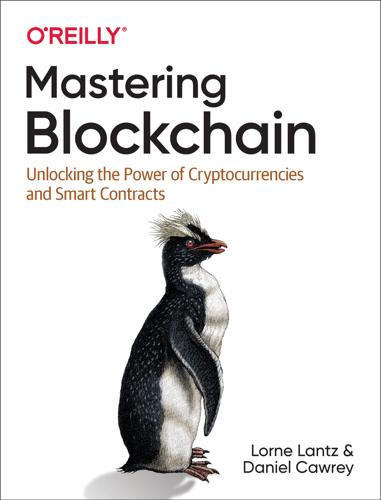
Mastering Blockchain: Unlocking the Power of Cryptocurrencies and Smart Contracts
by
Lorne Lantz
and
Daniel Cawrey
Published 8 Dec 2020
In his initial proposal for Hashcash, Back referenced DigiCash and raised the idea that adding a fee or “postage” on emails with digitized currency could reduce spam. By utilizing a hash, or a function requiring computer processing, Hashcash would impose an economic cost, which would limit spam in email systems. For digital currency, the concept of using hashes would solve what’s called the double spend problem, which enables a digital unit to be copied like a file and thus spent more than once. Computers, after all, make it easy to duplicate files; anyone can copy an image file and reproduce it over and over. The use of hashing is meant to limit that possibility with digital money by imposing a cost through proof-of-work, or computing power.
…
Byzantine agreement, Other Concepts for Consensus Byzantine fault-tolerant agreement, RippleHotStuff algorithm, Borrowing from Existing Blockchains C Cardano, Blockchains to Watch Casper algorithm (proof-of-stake), Ethereum Scaling CCXT (CryptoCurrency eXchange Trading Library), Open Source Trading Tech cell phone porting attacks, Security Fundamentals central bank digital currencies (CBDCs), Central Bank Digital Currencies centralizationcaused by proof-of-work consensus on Bitcoin, Ripple and Stellar decentralization versus, Decentralization Versus Centralization distributed versus centralized versus decentralized systems, Distributed Versus Centralized Versus Decentralized-Bitcoin Predecessors Libra's centralization challenge, Novi centralized exchanges, Decentralized Exchange Contracts, The Role of Exchanges, Jurisdictiondecentralized exchanges versus, Decentralized Versus Centralized Exchanges-Scalabilitycustody and counterparty risk, Custody and counterparty risk exchange rate, Exchange rate infrastructure, Infrastructure Know Your Customer (KYC) rules, Know your customer scalability, Scalability token listing, Token listing infrastructure differences from decentralized exchanges, Decentralized Exchange Contracts CFTC (Commodity Futures Trading Commission), FinCEN Guidance and the Beginning of Regulation Chainalysis, Analytics channels (Lightning), Lightning Chaum, David, DigiCash Chia, Alternative methods Chicago Mercantile Exchange (CME), partnership with Royal Mint, The Royal Mint China, central bank cryptocurrency, China Coburn, Zachary, Skirting the Laws Coin ATM Radar website, Evolution of the Price of Bitcoin Coinbase, Wallet Types: Custodial Versus Noncustodial, Custody Coinbase Pro, ExchangesAPI example, BTC/USD ticker call, Exchange APIs and Trading Bots arbitrage trading on, Arbitrage Trading-Float Configuration 3 custody solutions, robust, Counterparty Risk example order book, Slippage coinbase transaction, Storing Data in a Chain of Blocks, The Coinbase TransactionBitcoin Genesis block, Achieving Consensus Coincheck, Coincheck CoinDesk, Information coins, DigiCash Coinye, More Altcoin Experiments cold storage wallets, Counterparty Risk cold wallets, Wallet Type Variations collisions, cryptographic hashes and, Hashes colored coins, NXT, Colored Coins and Tokens Commodity Exchange Act (CEA), Wash Trading Commodity Futures Trading Commission (CFTC), FinCEN Guidance and the Beginning of Regulation conferences on blockchain industry, Information confidential assets, Liquid confirmations, Confirmations confirmed transactions, Transactionsconfirmed by miner, Transaction life cycle confirmed by network on Bitcoin, Transaction life cycle consensus, Consensus-Alternative methodsAvalanche mechanism, Avalanche in Bitcoin network, Compelling Components-Generating transactions Corda, Corda consensus in decentralized systems, Distributed Versus Centralized Versus Decentralized Libra mechanism for, Borrowing from Existing Blockchains, How the Libra Protocol Works other concepts for, Other Concepts for Consensus proof-of-stake, Proof-of-Stake-Proof-of-Stake proof-of-work, Proof-of-Work-Confirmationsblock discovery, Block discovery confirmations by miners of block to include in blockchain, Confirmations mining process on Bitcoin, The mining process transaction life cycle, Transaction life cycle SCP protocol, Stellar XRP Consensus Protocol, Ripple ConsenSys, ConsenSysTruffle Suite tools for smart contracts, Authoring a smart contract contentious hard forks, Understanding Forks-Replay attacksreplay attacks vulnerability, Replay attacks Corda, Corda-Corda languageconsensus, Corda consensus how it works, How Corda works ledger, Corda ledger network, The Corda network programming language, Corda language Counterparty blockchain, Counterparty counterparty risk, Counterparty Riskon centralized versus decentralized exchanges, Custody and counterparty risk reduced, on decentralized exchanges, Decentralized Exchange Contracts cross-shard communication complexity, Other Altchain Solutions crypto laundering, The Evolution of Crypto Laundering-The Evolution of Crypto Launderinghow funds are laundered, The Evolution of Crypto Laundering cryptocurrencies, Cryptocurrency Fundamentals-Summaryadditional, Mastercoin introducing notion of, Mastercoin and Smart Contracts backing DAI multi-collateral token, DAI and blockchain, leading to new platforms for the web, Web 3.0 blockchain systems and unit of account, Storing Data in a Chain of Blocks consensus, Consensus-Alternative methodsother concepts for, Other Concepts for Consensus proof-of-stake, Proof-of-Stake-Proof-of-Stake proof-of-work, Proof-of-Work-Confirmations cryptographic hashes, Hashes-Custody: Who Holds the Keys custody, Custody: Who Holds the Keys-Security Fundamentals ICOs or fundraising for projects, Use Cases: ICOs illegal uses of, Catch Me If You Can methods of buying and selling, Evolution of the Price of Bitcoin mining, Mining-Block Generation privacy-focused, Privacy-Focused Cryptocurrencies public and private keys in systems, Public and Private Keys in Cryptocurrency Systems-Public and Private Keys in Cryptocurrency Systems regulatory bodies in the US, FinCEN Guidance and the Beginning of Regulation security, Security Fundamentals-Recovery Seed stablecoins based on, Crypto-Based Stablecoins-Tether stakeholders in ecosystem, Stakeholders-Informationanalytics services, Analytics brokerages, Brokerages custody solutions, Custody exchanges, Exchanges information services, Information theft from ownersexchange hacks, Exchange Hacks-NiceHash other hacks, Other Hacks-Summary transactions in, Transactions-Bitcoin Transaction Security UTXO model for Bitcoin transactions, The UTXO Model-The UTXO Model cryptocurrency ATMs, Evolution of the Price of Bitcoin CryptoCurrency eXchange Trading Library (CCXT), Open Source Trading Tech cryptographyBitcoin's use on transactions, Introducing the Timestamp Server cryptographic hashes, Hashes-Custody: Who Holds the Keys ECDSA encryption, signing and verifying transactions, Signing and Validating Transactions enabling proof-of-work on Hashcash, Hashcash public/private key, Bitcoin's use of, Public/private key cryptography-Generating keys use by DigiCash, DigiCash CryptoKitties, ERC-721-ERC-777causing scaling problems on Ethereum, Challenges in Developing Dapps digital cats as nonfungible tokens, Fungible and Nonfungible Tokens CryptoLocker and ransomware, CryptoLocker and Ransomware CryptoNote protocol, Monero currencies, exchanges for, Exchanges(see also exchanges) custodial wallets, Wallet Types: Custodial Versus Noncustodial(see also wallets) custody, Custody: Who Holds the Keys-Security Fundamentalscounterparty risk with exchanges, Counterparty Risk, Custody and counterparty risk crypto custody solutions, Custody custody providers, Counterparty Risk cyberbucks, DigiCash D DAGs (directed acyclic graphs), DAGs DAI stablecoin, DAIsavings rates for, Savings Dai, Wei, B-Money DAML, DAML DAOs (decentralized autonomous organizations), Decentralized Autonomous Organizations-Other Ethereum forks, Important DefinitionsThe DAO project on Ethereum, Initial Coin Offerings dapps (see decentralized applications) Dash, Dash database management systems (DBMSs), Databases and Ledgers databasesbackend/database differences between centralized exchanges and Uniswap, Infrastructure and ledgers, Databases and Ledgers decentralizationversus centralization, Decentralization Versus Centralization decentralizing the web, Web 3.0 distributed versus centralized versus decentralized systems, Distributed Versus Centralized Versus Decentralized-Bitcoin Predecessors decentralized applications (dapps), Ether and Gas, Decentralized Applications (Dapps)-Challenges in Developing Dappsbuilding decentralized web frameworks, Web 3.0 challenges in developing, Challenges in Developing Dapps Corda, Corda language running on top of a blockchain, Deploying and Executing Smart Contracts in Ethereum use cases, Use Cases decentralized autonomous organizations (DAOs), Decentralized Autonomous Organizations-Other Ethereum forks, Important DefinitionsThe DAO project on Ethereum, Initial Coin Offerings decentralized exchange contracts, Decentralized Exchange Contracts-Summary decentralized exchanges, The Role of Exchanges, Decentralized Exchanges-Scalabilityversus centralized exchanges, Decentralized Versus Centralized Exchanges-Scalabilitycustody and counterparty risk, Custody and counterparty risk exchange rate, Exchange rate infrastructure, Infrastructure Know Your Customer (KYC) rules, Know your customer scalability, Scalability token listing, Token listing decentralized finance (DeFi), Decentralizing Finance and the Web-Derivativesflash loans, Flash Loans-The Fulcrum Exploitcreating the flash loan smart contract, Creating a Flash Loan Contract-Deploying the Contract deploying the contract, Deploying the Contract executing a loan, Executing a Flash Loan-Executing a Flash Loan Fulcrum attack, The Fulcrum Exploit important definitions, Important Definitions privacy and information security, Privacy-Ring Signaturesring signatures, Ring Signatures Zcash, Zcash zero-knowledge proof, Zero-Knowledge Proof zk-SNARKs, zk-SNARKs redistribution of trust, Redistribution of Trust-Naming Servicesidentity and dangers of hacking, Identity and the Dangers of Hacking naming services, Naming Services services, DeFi Services-Derivativesderivatives, Derivatives lending, Lending savings, Savings stablecoins, Stablecoins-KYC and pseudonymity traditional versus decentralized financial system, Decentralizing Finance DeFI Pulse website, DeFi Services delegated proof-of-stake, Alternative methods deposit contracts, Ethereum Scaling depth charts, Depth Chartssell wall on, Whales derivatives, Derivativesin decentralized finance, Derivatives derivatives exchanges, The Role of Exchanges desktop wallets, Wallet Type Variations DEXes (see decentralized exchanges; exchanges) dictionary attacks on passwords, Zero-Knowledge Proof difficulty of discovering valid block hash, Block discovery DigiCash, DigiCash digital bonds, Banking digital money, Bitcoin Predecessors(see also cryptocurrencies) creation of, in B-Money, B-Money use of hashing to limit double spend, Hashcash digital signaturesmultisignature system, Hash Time Locked Contracts, Lightning Schnorr algorithm, Privacy signing transactions, Signing and Validating Transactions Digix, Digix directed acyclic graphs (DAGs), DAGs disintermediation, Identity and the Dangers of Hacking distributed ledger technology (DLT), Databases and Ledgers distributed systems, Decentralized Applications (Dapps)Bitcoin, Compelling Components distributed versus centralized versus decentralized systems, Distributed Versus Centralized Versus Decentralized-Bitcoin Predecessors Dogecoin, More Altcoin Experiments Domain Name System (DNS), decentralized version of, Altcoins dot-com crash, Tulip Mania or the internet? double spend problem, Hashcashin Satoshi Nakamoto's whitepaper, The Whitepaper dumping of a cryptocurrency, Wash Trading E E-gold, E-Gold EEA (Enterprise Ethereum Alliance), The Enterprise Ethereum Alliance Elements open source project, Liquid Elliptic Curve Digital Signature Algorithm (ECDSA) encrytionsecp256k1 function, Public and Private Keys in Cryptocurrency Systems signing and validating transactions with, Signing and Validating Transactions Elliptic Curve Digital Signature Algorithm (ECDSA) secp256k1 function, Generating keys Enigma, Skirting the Laws, Privacy enterprise blockchains, Enterprise Implementations-DAMLCorda, Corda-Corda language DAML, DAML Hyperledger platform, Hyperledger zero-knowledge proofs used in, Zero-Knowledge Proof Enterprise Ethereum Alliance (EEA), The Enterprise Ethereum Alliance EOS, Blockchains to Watchorigins of, Tokenize Everything ERC-20 token standard, Tokens on the Ethereum Platform, ERC-20-ERC-20creating your own custom token, ERC-20 DeFi's reliance on Ethereum and ERC-20 assets, Decentralizing Finance events supported by ERC-20 compliant smart contracts, ERC-20 example of ERC-20 smart contract, ERC-20-ERC-20 listing of tokens on Uniswap, Token listing methods, ERC-20 push and pull transactions to move tokens, ERC-777 wrapped tokens outside of Ethereum ecosystem, Important Definitions ERC-721 token standard, Fungible and Nonfungible Tokens, ERC-721-ERC-777 ether, Ether and Gasdenominations of, Gas and Pricing EtherDelta redirection, EtherDelta Redirection Ethereum, The Evolution to Ethereum-Summaryblock times, Float Configuration 2 cost of storing data on, Tokenize Everything decentralized applications (dapps), Decentralized Applications (Dapps)-Challenges in Developing Dapps decentralized exchange, IDEX, Decentralized Exchange Contracts DeFi's reliance on Ethereum and ERC-20 assets, Decentralizing Finance deploying and executing smart contracts, Deploying and Executing Smart Contracts in Ethereum-Interacting with CodeEthereum Virtual Machine (EVM), The Ethereum Virtual Machine-Gas and Pricing Ethereum Classic fork, The Ethereum Classic Fork Etherscan analytics service, Analytics improving Bitcoin's limited functionality, Improving Bitcoin’s Limited Functionality-Ethereum: Taking Mastercoin to the Next Level improving Bitcoin's lmited functionalitycolored coins and tokens, Colored Coins and Tokens Mastercoin and smart contracts, Mastercoin and Smart Contracts Omni Layer, Understanding Omni Layer-Adding custom logic Keccak-256 hash algorithm, Hashes maximum transaction rate, Scalability origins of, Tokenize Everything privacy implementations based on, Ethereum-Based Privacy Implementations scaling in Ethereum 2.0, Ethereum Scaling-Ethereum Scaling scaling solutions, Other Altchain Solutions taking Mastercoin to the next level, Ethereum: Taking Mastercoin to the Next Level-ConsenSysdecentralized autonomous organizations, Decentralized Autonomous Organizations-Other Ethereum forks ether and gas, Ether and Gas key organizations in ecosystem, Key Organizations in the Ethereum Ecosystem use cases, ICOs, Use Cases: ICOs tokenize everything via ICOs, Tokenize Everything tokens on, Tokens on the Ethereum Platform-Different Token Typesairdrops and, Airdrops deciding whether a token is necessary, Is a Token Necessary?
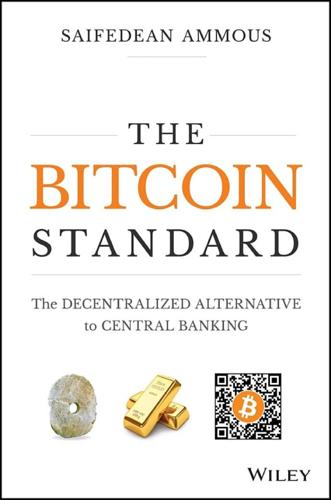
The Bitcoin Standard: The Decentralized Alternative to Central Banking
by
Saifedean Ammous
Published 23 Mar 2018
While it is easy for any network member to verify the validity of a transaction, a system of voting based on giving each member one vote could be gamed by a hacker creating a lot of nodes to vote to validate their fraudulent transactions. Only by making accuracy based on CPU cycles expended by members, in other words, employing a proof‐of‐work system, can Bitcoin solve the double‐spending problem without a trusted third party. In its essence, proof‐of‐work involves network members competing to solve mathematical problems that are hard to solve but whose solution is easy to verify. All Bitcoin transactions verified in a ten‐minute interval are transcribed and grouped together into one block.
…
Only Bitcoin's rules control Bitcoin, and the possibility of changing these rules in any substantive way has become extremely impractical as the status‐quo bias continues to shape the incentives of everyone involved in the project. It is the sovereignty of Bitcoin code, backed by proof‐of‐work, which makes it a genuinely effective solution to the double‐spending problem, and a successful digital cash. And it is this trustlessness which other digital currencies cannot replicate. Facing any digital currency built after Bitcoin is a deep existential crisis: because Bitcoin is already in existence, with more security, processing power and an established user base, anybody looking to use digital cash will naturally prefer it over smaller and less secure alternatives.
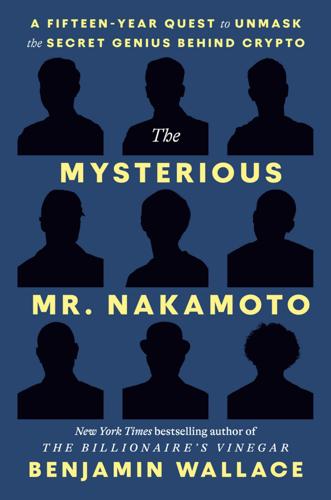
The Mysterious Mr. Nakamoto: A Fifteen-Year Quest to Unmask the Secret Genius Behind Crypto
by
Benjamin Wallace
Published 18 Mar 2025
But with Occupy Wall Street only a few months in the future it felt timely. And Jason explained how Bitcoin was truly new. Past attempts at creating digital cash had failed because the same feature that made the internet revolutionary—instantaneous, borderless distribution with no central authority—had also led to something called the double-spending problem. If the internet was a Xerox machine, and digital cash just a string of bits, what was to stop a person from copy-pasting the same one over and over again? Bitcoin’s architect, Satoshi Nakamoto, had ingeniously solved this problem. “Are you interested?” Jason asked. I was a former English major, knew nothing about computer science, and was an egregiously late adopter.
…
I learned that three years earlier, on Halloween 2008, Nakamoto had posted a short write-up outlining “a peer-to-peer electronic cash system” on an obscure, moderated email list about cryptography that was informally known as Metzdowd. He described a new kind of money. It would run on a network of volunteers’ computers, which anyone could join or leave at will. It would solve the double-spending problem by using a transparent public ledger collectively maintained by the network, rather than relying on a bank’s or government’s database of debits and credits. Nakamoto included a link to a more detailed formal description that would come to be known as “the Bitcoin white paper,” but that was the high-level idea.

Radical Technologies: The Design of Everyday Life
by
Adam Greenfield
Published 29 May 2017
The effective 2010 blockade on contributions to WikiLeaks that was imposed by Bank of America, Visa, MasterCard, PayPal and Western Union is the most prominent example of this sort of thing, but it’s far from the only one.6 Conversely, by deleting debits from their accounts from the ledger, the mint could effectively enable favored parties to use the same money more than once, and nobody else would be any the wiser. This was a deep design issue the fintech cognoscenti referred to as “the double-spending problem,” and it had vexed all previous digital currencies. Finally, the mint and its ledger would constitute that thing a conscientious engineer most devoutly hopes to avoid in the design of a complex system: a “single point of failure.” A single, centralized ledger recording every transaction would constitute both an acute technical vulnerability and an overwhelmingly attractive target for attempts at exploitation; its corruption for any reason would bring the whole network of exchange crashing down.
…
But what if the value of a currency could be founded on something other than hapless trust—something as coolly objective, rational, incorruptible and extrahistorical as mathematics itself? What if that same technique that let you do so could all at once eliminate any requirement for a central mint, resolve the double-spending problem, and provide for irreversible transactions? And what if it could achieve all this while preserving, if not quite the anonymity of participants, something very nearly as acceptable—stable pseudonymity? This was Satoshi’s masterstroke. One of Bitcoin’s fundamental innovations was that its architecture bypassed reliance on any centralized mint or reconciliation ledger.
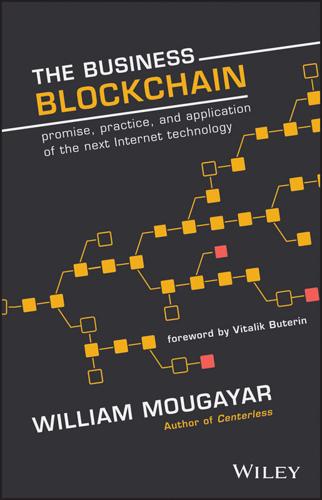
The Business Blockchain: Promise, Practice, and Application of the Next Internet Technology
by
William Mougayar
Published 25 Apr 2016
The paper’s abstract depicts Bitcoin’s foundation, and it explains its first principles: A purely peer-to-peer version of electronic cash would allow online payments to be sent directly from one party to another without going through a financial institution. A trusted third party is not required to prevent double-spending. We propose a solution to the double-spending problem using a peer-to-peer network. The network timestamps transactions by hashing them into an ongoing chain of hash-based proof-of-work, forming a record that cannot be changed without redoing the proof-of-work. The longest chain not only serves as proof of the sequence of events witnessed, but proof that it came from the largest pool of CPU power.

The Stack: On Software and Sovereignty
by
Benjamin H. Bratton
Published 19 Feb 2016
On the Aozaki project, see Nobutaka Aozaki, “Value_Added #240950,” 2012, http://www.nobutakaaozaki.com/value_added.html, and his “Artist Project/Value Added: # 240950 DM NOSLT WHL KRNL CR,” Cabinet, no. 47 (Fall 2012). 45. Aozaki's project is also a nice demonstration (and inversion) of the “double spend problem” that could plague any digital or networked currency: without discrete physical tokens that guarantee each unit of value is in only one place at a time, how to ensure that the same “dollar” is not spent more than once at a time? Blockchains offer the solution of distributed clearing of all transactions so that bitcoin's realm of value-representation remains uncompromised.
…
See also mobile devices Continuous Monument (Superstudio), 178 control, defined, 157, 222 control city, Deleuze, 157–158 Conway, Melvin, 56 Conway's law, 56–57 Copernican rotations of human autophenomenology, 287 “Cosmism” (Federov), 328 cosmograms, 91, 235, 243, 246 cosmopolitanism accidental, 70 to come, 17 cosmopolitan logic, 318, 322 cosmopolitics, 247, 306 informational, 135, 315 Kantian, 6, 153, 354 material, 257 postsecular, 318 proto-, 256–257 User, 175, 286 Costa Rica-Nicaragua border conflict, 9, 120, 144 counterespionage, crowd-sourcing, 110, 398n21 counterterrorism discourse, 324, 355 Cremaster 3 (Barney), 183 crime embodied, 156, 175–176 crisis of addressability, 26, 199, 335 “Critique of Violence, A” (Benjamin), 20 Crying of Lot 49, The (Pynchon), 194 crypto City-states, 352 cryptographic tools, 405n16 Cryptonomicon (Stephenson), 400n42 Crystal Island, Moscow (Foster), 182, 188 culpability, User, 346 cultural-economic order, 56 currency. See also money bitcoin, 9, 127, 171, 209, 336–337, 393n54 digital platform, 336–337 double spend problem, 418n45 Facebook, 127 future of, 127, 336 currency-matter link, computerization of, 199 “Cybernetic Praxis in Government” (Beer), 1 cybernetics autopoietic, 59 consumer, 274 corporate, 128 economic planning systems, 58–61, 328–329 of interface design, 157 meaning of, 275–276 rise of, 327 of scenario planning, 359 second-order, 334 Soviet, 58–61, 138, 328–329, 332 theory concurrent with, 54 cyberwarfare, 27 Daalder, Rene, 320 Dal Co, Francesco, 304 Dar al-Islam, 9, 322 dark matter, 91 Darknet, 215 dark pools, 451n63 Dark Side of the Rainbow effect, 359 data jurisdiction over, 113–114, 120, 122–123, 285–286 ownership of, 203, 285, 345–346 proliferation of, 117, 204 substantialization of, 168 data centers energy footprint, 92–94, 113, 140–141, 303–304 water-based, 113–114, 140 data collection Apps for, 236 mobile phones for, 342 sensor nets, 97, 180, 192, 295 smart dust for, 201 Users used for, 340 Data.Gov, 9 data hauls, 363–364 data haven, 400n42 data space versus state space, 123 data visualization, 267, 302, 334 Daultrey, Sally, 97 da Vinci robotic surgery system, 279 Davis, Mike, 304–305 de-addressing of things, 199 death of the User, 260, 271–274, 361, 370, 436n42 Debord, Guy, 414n10 debt, 303, 335–336 decision-making algorithms, 134, 332, 341–342 “Declaration of the Independence of Cyberspace” (Barlow), 441n7 dedifferentiated space, 33 deep address, 64, 197–200, 206, 209, 210–216, 334–335, 338–339, 370.
…
See also architecture defined, 354 emergency, 101–104, 321, 325 future of, 355–358 geopolitical, 247, 354–355 interior/exterior, 171 with and for Stacks, 359 villains in, 359 Designing for People (Dreyfuss), 254 design ontology of traps, 288–289 design violence, 428n55 Detroit, 307, 444n30 Deux ou trois choses que je sais d’elle (Godard), 147 Dick, Philip K., 320, 447n45 Didion, Joan, 280, 320 digital bill of rights, 362 Diller Scofidio + Renfro, 265, 320 Dioxiadis, Constantin, 178 Disney (Walt Disney Company), 128, 130, 311, 320 dispositif (apparatus). See apparatuses DNA, 268, 389n11 Doctorow, Cory, 198, 285, 346 domain name system, 196 Domed City (Fuller), 188 Dominguez, Ricardo, 172–173 Dotcom, Kim, 399n34 double spend problem, 418n45 doubt, suicide as expression of, 426n46 Dreyfuss, Henry, 254 Dr. Manuel de la Pila housing block, Puerto Rico, 311–312 drones, hacking, 401n45 drowning nations, 100 Dürer, Albrecht, 53, 181 Durkheim, Emile, 266, 385n25 Dutch East India Company, 399n32 “Dymaxion File” (Fuller), 267 Dyson, Freeman, 106–107 Dyson sphere conjecture, 106–107 Eames, Charles and Ray, 52 Earth composability of, 84–86 in Earth layer, 76, 82–84 geoaesthetics, 83–87 geometrics, 90–91, 309 grids and networks, 37–38, 90–97, 149–153, 170, 180, 192, 229, 280, 294–296, 393n53 human transformation of, 354 loop topology of, 24 petawatts of radiant energy from sun, 106–107 planet-spanning architectural propositions, 178 remapping everything in, 191–192 second planetary computer overlaying, 300–301 as skin, 87–92 subdividing, 21–24, 193, 195, 309, 413n5 terraforming, 85–86, 181, 187, 404n11 two, parable of, 444n27 writing on (geo-graphy), 85–86, 149, 193, 249 Earth layer address geographies, 193–195 to come, 294–295, 300–307 computational transparency, 76–81, 101 defined, 370–371 design issues, 101–107 Earth in, 76, 82–84 emergencies, designing for/designing with, 101–104 energy monitored and provisioned, 87–92 function of, 107, 300 geodesign, 83–84, 288, 304 geopolitical architecture, 98, 300–302 governance, 98–104, 140 human-facing permeation, Apple's, 187–188 interfacial problematics of, 256 introduction, 69–70, 75–76 productive accidents of, 91, 93 sensing and sovereignty, 97–101 world-making/world-erasure projects, 91–92 Earth layer interactions Address layer, 211 City layer, 153 Cloud layer, 94, 110, 140–141 User layer, 154 Earth-order, 24 “Earthrise” photograph (Anders), 86, 150, 300, 442n11 Easterling, Keller, 182 e-citizenship, 446n42 Eco, Umberto, 125, 243 eco-computing, 258–263, 268, 354 ecoglobalism, 89, 259, 303 ecojurisdictions, 97–100 ecological crisis, contributors to Anthropocenic energy platforms, 106 anthropogenic climatic events, 102 electronics manufacturing, 82–83 planetary-scale computation, 82–83, 92–96, 106–107, 113, 140–141, 258–260, 303–304 ecological noise, 106 ecology Anthropocenic, 102, 106, 217, 458n15 of energy, 98–104 mobile, of interfaces, 237–238 popular ecology movement, 86 restoration of, 304–305, 442n14 ecology of the gut, 268 e-commerce, 131 economic inequity, 311–312, 439n66, 458n15 economic planning systems, cybernetic, 58–61, 328–329 economics.
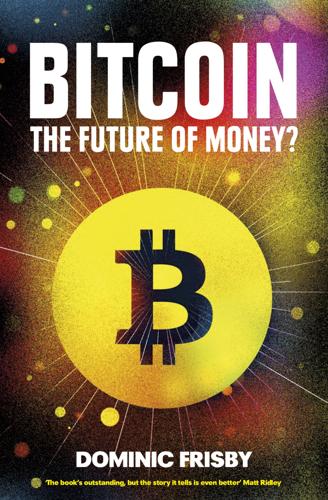
Bitcoin: The Future of Money?
by
Dominic Frisby
Published 1 Nov 2014
He was number two to Phil Zimmerman, the pioneer in the field, for many years at the Pretty Good Privacy (PGP) Corporation, where they developed the most widely used email encryption software in the world. Such were his beliefs in privacy, freedom and Cypherpunk, Finney was known to spend many nights writing and developing code for free, just because he believed in the work. In 1993, he published the paper, ‘Detecting Double-Spending’.80 Solving the double-spending problem was of course the key problem with digital cash. It was what Satoshi was so excited about when he proposed Bitcoin. In 2004, Finney developed the ‘reusable proof-of-work’ (RPOW) system, which coders regarded as a brilliant step forward – but his system never saw any economic use until Bitcoin.

Confessions of a Crypto Millionaire: My Unlikely Escape From Corporate America
by
Dan Conway
Published 8 Sep 2019
The two most difficult challenges were removing every single point of failure and preventing “double spends,” which could occur if the same money was sent to two different parties. In October 2008, a person or persons named Satoshi Nakamoto sent an email to the cypherpunk email list, introducing Bitcoin. He said he’d solved the digital money problem. He attached a nine-page white paper explaining how he’d done it. “In this paper, we propose a solution to the double-spending problem using a peer-to-peer distributed timestamp server to generate computational proof of the chronological order of transactions.” Satoshi proposed that each peer-to-peer transaction be arranged into a block of transactions. It would then be chained to the previous block by the node that wins a race to solve a computational puzzle.
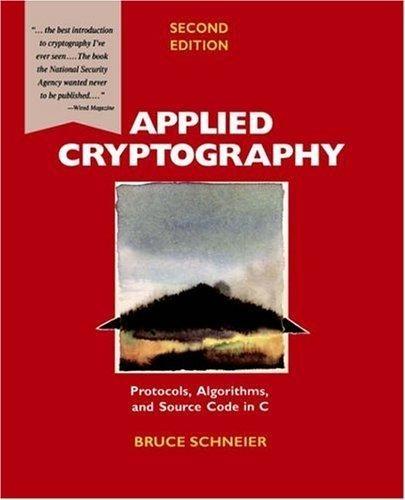
Applied Cryptography: Protocols, Algorithms, and Source Code in C
by
Bruce Schneier
Published 10 Nov 1993
If the bank refuses to sign the last check (if Alice is caught cheating) without penalizing Alice, she will continue to try until she gets lucky. Prison terms are a better deterrent. Protocol #2 The previous protocol prevents Alice from writing a money order for more than she claims to, but it doesn’t prevent Alice from photocopying the money order and spending it twice. This is called the double spending problem; to solve it, we need a complication: (1) Alice prepares 100 anonymous money orders for $1000 each. On each money order she includes a different random uniqueness string, one long enough to make the chance of another person also using it negligible. (2) Alice puts one each, and a piece of carbon paper, into 100 different envelopes.
…
B., 423 Algebraic structure, DES, 282–283 Algorithm M, 393–394 Algorithms, 2–4, 17 all-or-nothing disclosure of secrets, 543–546 Asmuth-Bloom, 529–530 Barrett’s, 244 Berlekamp-Massey algorithm, 380, 404 block chain mode, 206–207 choosing, 354–355 replay, 191–193 breaking, 8 CAST, 334–335 choosing, 214–216 cipher block chaining mode, 193–197, 208–210 cipher block chaining of plaintext difference mode, 208 cipher block chaining with checksum, 207–208 cipher-feedback mode, 200–202, 208–210 cipher mode choosing, 208–210 summary, 209 classes, 217 coin flipping using Blum integers, 543 using exponentiation modulo p, 542–543 using square roots, 541–542 complexity, 237–239 constant, 238 convertible undeniable signatures, 538–539 counter mode, 205–206, 209 cubic, 238 data compression, 226 designated confirmer signatures, 539–540 Diffie-Hellman, fair, 546–547 digital signatures, 39 exponential, 238 for export, 215–216 extended Euclidean, 246–248 factoring, 256 ISO/IEC 9979 registered, 607 Karnin-Greene-Hellman, 530 Khafre, 317–318 Khufu, 317 linear, 238 linear syndrome, 381 modes, DES, 277–278 multiple block cascading, 367–368 combining, 368 multiple-key public-key cryptography, 527–528 oblivious transfer, 550 one-way accumulators, 543 output-feedback mode, 203–205, 208–210 output feedback with a nonlinear function, 208 plaintext block chaining mode, 208 plaintext feedback mode, 208 polynomial, 238 polynomial-time, 238 probabilistic encryption, 552–554 propagating cipher block chaining mode, 207 public-key, 4–5, 33 quadratic, 238 quantum cryptography, 554–557 restricted, 3 running times, 238–239 secret-sharing algorithms, 528–531 secure multiparty computation, 551–552 Algorithms (Cont.) security, 8–9 self-synchronizing stream cipher, 198–199 stream ciphers, 197–198 subliminal-channel signature, 79 superpolynomial, 238 symmetric, 4 synchronous stream cipher, 202–203 TEA, 346 types, 189 unconditionally secure, 8 undeniable digital signatures, 536–539 using, 213–229 vector scheme, 529 zero-knowledge proofs, 548–550 See also Block ciphers; Stream ciphers All-or-nothing disclosure of secrets, 96, 543–546 voting with a single central facility, 128–130 Alternating stop-and-go generator, 383, 385, 410–411 American National Standards Institute, DES approval, 267–268 Anderson, Ross, 391 ANDOS, see All-or-nothing disclosure of secrets Anonymous message broadcast, 137–139 ANSI X3.105, 267 ANSI X3.106, 267 ANSI X9.8, 267 ANSI X9.17, 268, 359 key generation, 175 ANSI X9.19, 267 ANSI X9.26, 268 Arbitrated protocol, 23–26 Arbitration, timestamping, 75–76 Arbitrator, 23 document signing with, 35–37 group signatures with, 84–85 AR hash function, 453 Arithmetic, modular, 242–245 Arms Export Control Act, 610 Asmuth-Bloom scheme, 529–530 Association for Computing Machinery, 608 Asymmetric algorithms, see Public-key algorithms Atomic Energy Act, 610 Attack, 5 AT&T Model 3600 Telephone Security Device, 594–595 Authentication, 2, 52–56 DASS, 62 Denning-Sacco protocol, 63 dictionary attacks, 52 ISO framework, 574–577 Kerberos, 60 message, 56 Needham-Schroeder protocol, 58–59 Neuman-Stubblebine protocol, 60–62 Otway-Rees protocol, 59–60 protocols, formal analysis, 65–68 salt, 52–53 Schnorr, 511 SESAME, 572 SKEY, 53 SKID, 55–56 using interlock protocol, 54–55 using one-way functions, 52 using public-key cryptography, 53–54 Wide-Mouth Frog protocol, 56–57 Woo-Lam protocol, 63–64 Yahalom, 57–58 Authenticators, 568 Avalanche effect, 273 Backup keys, 181–182 BAN logic, 66–67 Barrett’s algorithm, 244 BaseKing, 346 Basis, polarization measurement, 555 Battista, Leon, 11 BBS generator, 417 add to spelled out, 553–554 Beacons, 64 Bellovin, Steve, 518, 520–521, 571 Bennett, Charles, 555, 557 Berlekamp-Massey algorithm, 380, 404 Bernstein, Dan, 616 Berson, Tom, 441 Best affine approximation attack, 381 Beth-Piper stop-and-go generator, 383–384 Bias, 425 Bidirectional message authentication codes, 457 Biham, Eli, 284–285, 288, 296, 301, 303, 306, 308, 311–312, 314, 316, 319, 354, 361, 434 Bilateral stop-and-go generator, 384–385 Binary trees, 78 Biotechnology, as cryptanalysis tool, 156–157 Birthday attack, 165–166, 430 Bit commitment, 86–88 using one-way functions, 87–88 using pseudo-random-sequence generators, 88 using symmetric cryptography, 86–87 Blakley, George, 72, 529 Blaze, Matt, 346, 364 Blinding factor, 112 Blind signatures, 112–115, 549–550 patents, 115 voting with, 126–127 Blobs, 88 Block algorithms, 4 Block chain mode, 206–207 Block ciphers, 4, 189 Blowfish, 336–339 CA-1.1, 327–328 cascading algorithms, 367–368 CAST, 334–335 CDMF key shortening, 366 choosing algorithms, 354–355 combining algorithms, 368 counter mode, 205–206, 209 Crab, 342–344 CRYPTO-MECCANO, 346 designing, 351 design theory, 346–351 Feistel networks, 347 group structure, 348 S-box, 349–351 simple relations, 347–348 strength against differential and linear cryptanalysis, 348–349 weak keys, 348 double encryption, 357–358 double OFB/counter, 363–364 doubling length, 363 electronic codebook mode, 189–191, 208–210 encryption speeds, 355 FEAL, 308–312 feedback, 193 GOST, 331–334 IDEA, 319–325 iterated, 347 Li-Wang algorithm, 346 LOKI, 314–316 Lucifer, 303–304 Madryga, 304–306 McEliece algorithm, 346 MMB, 325–327 multiple encryption, 357 NewDES, 306–308 Rao-Nam algorithm, 346 RC2, 318–319 RC5, 344–346 REDOC II, 311–313 REDOC III, 313 SAFER K-64, 339–341 security, based on one-way hash functions, 353–354 Skipjack, 328–329 versus stream ciphers, 210–211 SXAL8/MBAL, 344 triple encryption, 358–363 3–Way, 341–342 using one-way hash functions, 351–354 whitening, 366–367 xDES1, 365–366 Block length, doubling, 363 Block replay, 191–193 Blocks, 4 Blowfish, 336–339, 354, 647–654 Blum, Manuel, 89, 105, 108 Blum, Blum, and Shub generator, 417–418 Blum integers, 253 coin flipping, 543 zero-knowledge proofs, 549 Blum-Micali generator, 416–417 Boolean functions, in S-boxes, 350 Bosselaers, Antoon, 436, 441 Boyar, Joan, 369 Brassard, Gilles, 555, 557 Broadcasting: anonymous, 137–139 secret, 523–524 Brute-force attack, 8, 151–152 software-based, 154–155 time and cost estimates, 152–154 Bureau of Export Administration, 610–611 Burrows, Michael, 66 CA-1.1, 327–328 Cade algorithm, 500–501 Caesar Cipher, 11 CAFE, 606–607 CALC, 346 Cantwell Bill, 615–616 Capstone, 593–594 Cascade generators, 405 Cascades, Gollmann, 387–388 Cascading: multiple block algorithms, 367–368 multiple stream ciphers, 419–420 Cash, digital, see Digital cash Cassells, Ian, 381 CAST, 334–335 S-boxes, 349 CBC, see Cipher block chaining mode CCEP, 269, 598–599 CDMF, 366, 574 Cellhash, 446 Cellular automata, 500 Cellular automaton generator, 414 Certificates: Privacy-Enhanced Mail, 579 public-key, 185–187 X.509, 574–575 Certification authority, 186 Certification path, 576 Certified mail, digital, 122–123 Chaining variables, 436 Chambers, Bill, 385–386 Characteristics, 286–288 Chaum, David, 84, 115, 133, 137, 536, 549 Cheater, 27 sharing secrets with, 531 Chess Grandmaster Problem, 109 Chinese Lottery, 156–157 Chinese remainder theorem, 249–250, 470 Chor-Rivest knapsack, 466 Chosen-ciphertext attack, 6–7, 471–472 Chosen-key attack, 7 Chosen-plaintext attack, 6–7, 359 Chosen-text attack, 7 Cipher: substitution, 10–12 transposition, 12 Cipher block chaining mode, 193–197, 208–210 DES, 277–278 error extension, 196 error propagation, 195–196 initialization vector, 194 message authentication codes, 456 padding, 195 security, 196–197 self-recovering, 196 triple encryption, 360–361 Cipher block chaining of plaintext difference mode, 208 Cipher block chaining with checksum, 207–208 Cipher-feedback mode, 200–202, 208–210 DES, 277 error propagation, 201–202 initialization vector, 201 Cipher mode: choosing, 208–210 summary, 208–210 Ciphertext, 1–2 auto key, 198 hiding in ciphertext, 227–228 pairs, differential cryptanalysis, 285 stealing, 191 Ciphertext-only attack, 5–6 Cleartext, see Plaintext Clipper chip, 591–593 Clipper key-escrow, 328 Clipper phone, 594 Clock-controlled generators, 381 Clocking, 381 CoCom, 610 Code, 9 Coefficients, solving for, 248 Coin flipping, 89–92 fair, 541–543 into a well, 92 key generation, 92 using Blum integers, 543 using one-way functions, 90 using public-key cryptography, 90–91 using square roots, 541–542 Collision, 166 Collision-free, 30 Collision-resistance, 429 Combination generator, 381 Combining function, 381 Commercial COMSEC Endorsement Program, 269, 598–599 Commercial Data Masking Facility, 366, 574 Common Cryptographic Architecture, 573–574 Common modulus, dangers of, 493 Common modulus attack, RSA, 472 Communications: using public-key cryptography, 31–34 using symmetric cryptography, 28–29 Communications channels, encryption, 216–220 Communications Setup, 517–518 Complementation property, 281 Complement keys, DES, 281–282 Completely blind signatures, 112–113 Complete set of residues, 242 Complexity-theoretic approach, stream ciphers, 415–418 Complexity theory, 237–242 algorithms, 237–239 complexity of problems, 239–241 Compression, 226 Compression function, 431 Compression permutation, 273–274 Compromise, 5 Compromised keys, 182–183 Computational complexity, 237 Computationally secure, 8 Computer algorithms, 17 Computer clock, as random-sequence generator, 424 Computer Security Act of 1987, 600–601 Computing, with encrypted data, 85–86, 540–541 COMSET, 517–518 Conditional Access for Europe, 606–607 Conference key distribution, 524 Confusion, 237, 346–347 Congruent, 242 Connection integer, 403 feedback with carry shift registers, maximal-period, 406–407 Continued fraction algorithm, 256 Contract signing, simultaneous: with an arbitrator, 118 without an arbitrator face-to-face, 118–119 not face-to-face, 119–120 using cryptography, 120–122 Control Vector, 180 Convertible undeniable signatures, 538–539 Coppersmith, Don, 94, 266, 280, 283, 293, 398, 457 Coppersmith’s algorithm, 263 Correlation attack, 380 Correlation immunity, stream ciphers, 380 Correlations, random-sequence generators, 425 Counter mode, 205–206, 209 Counting coincidences, 14 Crab, 342–344 Credit cards, anonymous, 147 Crepeau, Claude, 555 Crypt(1), 414 CRYPT(3), 296 Cryptanalysis, 1, 5–8 differential, see Differential cryptanalysis FEAL, 311–312 GOST, 333–334 IDEA, 323 linear, 290–293 LOKI91, 316 Madryga, 306 N-Hash, 434–435 related-key, 290 Snefru, 432 types, 5–7 Cryptanalysts, 1 Crypt Breakers Workbench, 414 Cryptographers, 1 Cryptographic algorithm, see Cipher Cryptographically secure pseudo-random, 45 Cryptographic facility, 562 Cryptographic mode, 189 Cryptographic protection, databases, 73–74 Cryptographic protocol, 22 Cryptography, 1 CRYPTO-LEGGO, 414 Cryptologists, 1 Cryptology, 1 CRYPTO-MECCANO, 346 Cryptosystems, 4 fair, 97 finite automaton public-key, 482 hybrid, 32–34 security, 234–235 weak, 97 Cusick, Thomas, 312 Cut and choose, 103 Cypherpunks, 609 Daemen, Joan, 325, 341, 349, 414 Damgard, Ivan, 446 Damm, Arvid Gerhard, 13 Data, encrypted: computing with, 85–86, 540–541 discrete logarithm problem, 540–541 for storage, 220–222 Databases, cryptographic protection, 73–74 Data complexity, 9 Data Encryption Algorithm, see Data Encryption Standard Data Encryption Standard, 17, 265–301 adoption, 267–268 algorithm, brute-force attack efficiency, 152–153 characteristics, 286–288 commercial chips, 279 compared to GOST, 333–334 compression permutation, 273–274 CRYPT(3), 296 decryption, 277 description, 270 DESX, 295 development, 265–267 differential cryptanalysis, 284–290 DES variants, 298 expansion permutation, 273–275 final permutation, 277 generalized, 296–297 hardware and software implementation, 278–279 with independent subkeys, 295 initial permutation, 271 iterated block cipher, 347 key transformation, 272–273 linear cryptanalysis, 290–293 modes, 277–278 multiple, 294–295 1987 review, 268–269 1993 review, 269–270 outline of algorithm, 270–272 P-boxes design criteria, 294 permutation, 275, 277 RDES, 297–298 related-key cryptanalysis, 290 RIPE-MAC, 457–458 S-boxes, 349 alternate, 296–298 design criteria, 294 key-dependent, 298, 300, 354 substitution, 274–276 security, 278, 280–285 algebraic structure, 282–283 complement keys, 281–282 current, 300–301 key length, 283–284 number of rounds, 284 possibly weak keys, 281–282 S-box design, 284–285 semiweak keys, 280–281 weak keys, 280–281 snDES, 298–299 source code, 623–632 speeds on microprocessors and computers, 279 validation and certification of equipment, 268 Data Exchange Key, 581 Data Keys, 176 Davies, Donald, 562 Davies-Meyer, 448 abreast, 452 modified, 449–450 parallel, 451 tandem, 451–452 Davies-Price, 358 Decoherence, 165 Decryption, 1 DES, 277 key, 3 key-error detection, 179 knapsack algorithms, 465 with a public key, 39 with symmetric algorithm, 4 den Boer, Bert, 434, 436, 441 Denning-Sacco protocol, 63 Dense, 378 Dereferencing keys, 221–222 Derived sequence attack, 381 Designated confirmer signatures, 82–83, 539–540 Desmedt, Yvo, 81 DES, see Data Encryption Standard Destruction: information, 228–229 of keys, 184–185 DESX, 295 Dictionary attack, 52, 171–173 Differential cryptanalysis, 284–290 attacks against DES, 288–290 DES variants, 298 Lucifer, 303 extending to higher-order differentials, 293 strength against, block cipher design theory, 348–349 Differential-linear cryptanalysis, 293 Diffie, Whitfield, 31, 37, 122, 216, 283, 419, 461, 501, 565 Diffie-Hellman: EKE implementation, 519–520 extended, 515 failsafe, 547–548fair, 546–547 Hughes variant, 515 key exchange without exchanging keys, 515 patents, 516 with three or more parties, 514 Diffie’s randomized stream cipher, 419 Diffusion, 237, 346–347 Digital card, properties, 146 Digital cash, 139–147 anonymous, 139 credit cards, 147 money orders, 140 double spending problem, 140–141 off-line systems, 146 on-line systems, 145–146 other protocols, 145–147 perfect crime, 145 practical, 145 secret splitting, 142–145 Digital certified mail, 122–123 Digital Notary System, 78 Digital Signature Algorithm, 17, 483–494 attacks against k, 492 computation time comparison with RSA, 489 criticisms, 484–486 dangers of common modulus, 493 description, 486–488 ElGamal encryption with, 490–491 patents, 493–494 prime generation, 488–490 proposal for NIST standard, 483–486 RSA encryption with, 491 security, 491–492 speed precomputations, 487–488 subliminal channel, 493, 534–536 foiling, 536 variants, 494–495 Digital signatures, 34–41 algorithms, 39 applications, 41 blind, 112–115, 549–550 convertible undeniable signatures, 538–539 converting identification schemes to, 512 definition, 39 designated confirmer signatures, 82–83, 539–540 ElGamal, 476–478 with encryption, 41–44 entrusted undeniable, 82 fail-stop, 85 Fiat-Shamir signature scheme, 507–508 group signatures, 84–85 Guillou-Quisquater signature scheme, 509–510 improved arbitrated solution, 76 key exchange with, 50 multiple, 39–40 Guillou-Quisquater, 510 nonrepudiation, 40 oblivious, 117 protocol, 40 proxy, 83 public-key algorithms, 483–502 Cade algorithm, 500–501 cellular automata, 500 Digital Signature Algorithm, see Digital Signature Algorithm discrete logarithm signature schemes, 496–498 ESIGN, 499–500 GOST digital signature algorithm, 495–496 Digital signatures (Cont.) public-key algorithms (Cont.)
…
Matsumoto-Imai algorithm, 500 Ong-Schnorr-Shamir, 498–499 public-key cryptography, 37–38 attacks against, 43–44 one-way hash functions and, 38–39 resend attack, foiling, 43 RSA, 473–474 Schnorr signature scheme, 511–512 subliminal-free, 80 with symmetric cryptosystems and arbitrator, 35–37 terminology, 39 timestamps, 38 trees, 37 undeniable, 81–82, 536–539 Dining Cryptographers Problem, 137 Discrete logarithm, 245 in finite field, 261–263 zero-knowledge proofs, 548 Discrete Logarithm Problem, 501, 540–541 Discrete logarithm signature schemes, 496–498 Distributed Authentication Security Service, 62 Distributed convertible undeniable signatures, 539 Distributed key management, 187 DNA computing, 163–164 DNRSG, 387 DoD key generation, 175 Double encryption, 357–358 Double OFB/counter, 363–364 Double spending problem, 140–141 Driver-level encryption, 222–223 DSA, see Digital Signature Algorithm Dynamic random-sequence generator, 387 E-box, 273 ECB, see Electronic codebook mode Electronic checks, 146 Electronic codebook mode, 189–191, 208–210 combined with OFB, 364 DES, 277–278padding, 190–191 triple encryption, 362–363 Electronic coins, 146 Electronic Frontier Foundation, 608 Electronic-funds transfer, DES adoption, 268 Electronic Privacy Information Center, 608 ElGamal, 532–533 EKE implementation, 519 encryption, 478 with DSA, 490–491 patents, 479 signatures, 476–478 speed, 478–479 ElGamal, Taher, 263 Elliptic curve cryptosystems, 480–481 Elliptic curve method, 256 Ellison, Carl, 362 Encoding, 226 Encrypt-decrypt-encrypt mode, 359 Encrypted Key Exchange: applications, 521–522 augmented, 520–521 basic protocol, 518–519 implementation with Diffie-Hellman, 519–520 ElGamal, 519 RSA, 519 strengthening, 520 Encryption, 1 communication channels, 216–220 combining link-by-link and end-to-end, 219–221 with compression and error control, 226 data, for storage, 220–222 detection, 226–227 digital signatures with, 41–44 driver-level versus file-level, 222–223 ElGamal, 478 with DSA, 490–491 end-to-end, 217–220 with interleaving, 210–211 key, 3 knapsack algorithms, 464 link-by-link, 216–218 multiple, 357 with a private key, 39 probabilistic, 552–554 RSA, 468 with DSA, 491 with symmetric algorithm, 4 using public key, 5 End-to-end encryption, 217–220 combined with link-by-link, 219–221 Enigma, 13, 414 Entropy, 233–234 Entrusted undeniable signature, 82 Error detection: during decryption, 179 during transmission, 178 Error extension, cipher block chaining mode, 196 Error propagation: cipher block chaining mode, 195–196 cipher-feedback mode, 201–202 output-feedback mode, 204 Escrow agencies, 592 Escrowed Encryption Standard, 97, 593 ESIGN, 499–500, 533–534 Euclid’s algorithm, 245 Euler totient function, 248–249 Expansion permutation, 273–275, 315 Export: of algorithms, 215–216, 610–616 foreign, 617 Exportable Protection Device, 389 Export Administration Act, 610 EXPTIME, 241 Extended Euclidean algorithm, 246–248 Factoring, 255–258 general number field sieve, 159–160 long-range predictions, 162 public-key encryption algorithms, 158–159 special number field sieve, 160–161 using quadratic sieve, 159 Factoring Problem, 501 Failsafe: Diffie-Hellman, 547–548 key escrowing, 98 Fail-stop digital signatures, 85 Fair cryptosystems, 97 Fait-Shamir, 508 FAPKC0, 482 FAPKC1, 482 FAPKC2, 482 FEAL, 308–312 cryptanalysis, 311–312 description, 308–10 patents, 311 Feedback: cipher block chaining mode, 193, 195 internal, output-feedback mode, 203 Feedback function, 373 Feedback shift register, 373 Feedback with carry shift registers, 402–404 combining generators, 405, 410 maximal-length, tap sequences, 408–409 maximal-period, connection integers, 406–407 Feedforward, cipher block chaining mode, 195 Feige, Uriel, 503–504 Feige-Fiat-Shamir, 503–508 enhancements, 506–507 identification scheme, 504–505 simplified, 503–504 Feistel, Horst, 266, 303 Feistel network, 347 Blowfish, 337 practically secure, 349 Fermat’s little theorem, 248 Euler’s generalization, 248 FFT-Hash, 446 Fiat, Amos, 503–504 Fiat-Shamir signature scheme, 507–508 Fibonacci configuration, 373, 379 Fibonacci shrinking generator, 391 File-level encryption, 222–223 Filter generator, 381 Finite field, 254 discrete logarithms, 261–263 FIPS PUB 46, 267 FIPS PUB 74, 267 FIPS PUB 81, 267 FIPS PUB 112, 267 Fish, 391 Fixed bit index, 543 Flat keyspace, 176 Flipping coins, see Coin flipping Fortified key negotiation, 522 Galois configuration, linear feedback shift registers, 378–379 Galois field, computing in, 254–255 Garey, Michael, 241 Gatekeeper, 278 Geffe generator, 382–383 General number field sieve, 159–160, 256 General Services Administration, DES adoption, 268 Generators, 253–254 Gifford, 392–393 Gifford, David, 392 Gill, J., 501 Global deduction, 8 Goldwasser, Shafi, 94, 552 Gollmann, Dieter, 386 Gollmann cascade, 387–388 Goodman-McAuley cryptosystem, 466 Goresky, Mark, 404 GOST, 331–334, 354 source code, 643–647 GOST digital signature algorithm, 495–496 GOST hash function, 454 GOST R 34.10–94, 495 Gosudarstvennyi Standard Soyuza SSR, 331–334 Graham-Shamir knapsacks, 465 Graph isomorphism, 104–105 Greatest common divisor, 245–246 Grossman, Edna, 266 Group signatures, 84–85 Group Special Mobile, 389 Group structure, block ciphers design theory, 348 GSM, 389 Guillou, Louis, 102, 508 Guillou-Quisquater: identification scheme, 508–510 signature scheme, 509–510 Gutmann, Peter, 353 Guy, Richard, 159 Haber, Stuart, 75, 485, 488 Hamiltonian cycles, 105–106 Hard drive, encrypted, providing random access to, 222 Hardware: DES implementation, 278–279 encryption, 223–225 RSA, 469 Hash functions, see One-way hash functions Hash value, 30 HAVAL, 445–446 Hellman, Martin, 31–32, 37, 262, 283, 293, 358–359, 461–462 Hiding information from an oracle, 86 Historical terms, 9 Homophonic substitution cipher, 10–11 Hughes, 515 Hughes, Eric, 609 Hughes XPD/KPD, 389–390 Hybrid cryptosystems, 32–34, 461 IBC-Hash, 458 IBM Common Cryptographic Architecture, 573–574 IBM secret-key management protocol, 561–562 IDEA, 319–325, 354 cryptanalysis, 323 description, 320–322 modes of operation, 323–325 overview, 320–321 patents, 325 S-boxes, 349 source code, 637–643 speed, 322–323 strength against differential cryptanalysis, 348 variants, 325 Ideal secrecy, 236 Identification schemes: converting to signature schemes, 512 Feige-Fiat-Shamir, 503–508 Guillou-Quisquater, 508–510 Ohta-Okamoto, 508 Schnorr authentication and signature scheme, 510–512 Identity-based cryptosystems, 115 Ignition key, 564 Import, foreign, 617 Index of coincidence, 14 Information: amount, information theory definition, 233 deduction, 8 destruction, 228–229 Information-theoretic approach, 418 stream ciphers, 415 Information theory, 233–237 cryptosystem security, 234–235 entropy and uncertainty, 233–234 in practice, 236–237 rate of the language, 234 unicity distance, 235–236 Ingemarsson, Ingemar, 418 Initialization vector: cipher block chaining mode, 194 cipher-feedback mode, 201 output-feedback mode, 204 Inner-CBC, 360, 363 Insertion attack, synchronous stream ciphers, 203 Instance deduction, 8 Institute of Electrical and Electronics Engineers, 608 Integrated Services Digital Network, 563–565 Integrity, 2 Interactive protocol, 103 Interchange Key, 581 Interleave, 210–211 Interlock protocol, mutual authentication using, 54–55 Internal feedback, 203 International Association for Cryptologic Research, 605 International Standards Organization: authentication framework, 574–577 DES adoption, 268 International Traffic in Arms Regulations, 610–614 Internet, Privacy-Enhanced Mail, 577–584 Introducers, 187 Inverses modulo a number, 246–248 IPES, 319 ISDN, 563–565 ISO 8732, 359 ISO 9796, 472, 474, 486 ISO/IEC 9979, 607 ISO X.509 protocols, 574–577 Iterated block cipher, 347 Jacobi symbol, 252–253 J-algebras, 501 Jam, 414 Jennings generator, 383–384 Johnson, David, 241 Jueneman’s methods, 457 Kaliski, Burt, 342 Karn, 351–352 Karn, Phil, 351 Karnin-Greene-Hellman, 530 Kerberos, 60, 566–571 abbreviations, 567 authentication steps, 567 credentials, 568 getting initial ticket, 569 getting server tickets, 569–570 licenses, 571 model, 566 requesting services, 570 security, 571 Version 4, 570–571 Version 5 messages, 568 Kerckhoffs, A., 5 Kerckhoffs’s assumption, 7 Key, 3 backup, 181–182 CDMF shortening, 366 complement, DES, 281–282 compromised, 182–183 controlling usage, 180 dereferencing, 221–222 destroying, 184–185 distribution in large networks, 177 generating, 170–175 ANSI X9.17 standard, 175 DoD, 175 pass phrases, 174–175 poor choices, 171–173 random keys, 173–174 reduced keyspaces, 170–171 ISDN, 563–564 lifetime, 183–184 possibly weak, DES, 281–282 semiweak, DES, 280–281 session, 33, 180 storing, 180–181 transferring, 176–177 transmission, error detection, 178 updating, 180 using, 179–180 verification, 178–179 weak block ciphers design theory, 348DES, 280–281 Key and message broadcast, 51–52 Key and message transmission, 51 Key Auto-Key, 202 Keyboard latency, as random-sequence generator, 424–425 Key Certification Authority, 43 Key control vectors, 562 Key distribution: anonymous, 94–95 conference, 524 Key Distribution Center, 43–44 Key-Encryption Keys, 176, 184 Key escrow, 97–100, 181–182, 591 politics, 98–100 Key exchange, 47–52 DASS, 62 Denning-Sacco protocol, 63 with digital signatures, 50 interlock protocol, 49–50 Kerberos, 60 key and message broadcast, 51–52 key and message transmission, 51 man-in-the-middle attack, 48–49 Needham-Schroeder protocol, 58–59 Neuman-Stubblebine protocol, 60–62 Otway-Rees protocol, 59–60 protocols, formal analysis, 65–68 with public-key cryptography, 48 with symmetric cryptography, 47–48 Wide-Mouth Frog protocol, 56–57 without exchanging keys, 515 Woo-Lam protocol, 63–64 Yahalom, 57–58 Key-exchange algorithms: COMSET, 517–518 conference key distribution and secret broadcasting, 523–525 Diffie-Hellman, 513–516 Encrypted Key Exchange, 518–522 fortified key negotiation, 522 Shamir’s three-pass protocol, 516–517 station-to-station protocol, 516 Tatebayashi-Matsuzaki-Newman, 524–525 Key generation, using coin flipping, 92 Key length: comparing symmetric and public-key, 165–166 deciding on, 166–167 DES, 283–284 public-key, 158–165 DNA computing, 163–164 quantum computing, 164–165 recommended lengths, 161–163 symmetric, 151–158 biotechnology as cryptanalysis tool, 156–157 brute-force attack, 151–154 Chinese Lottery, 156–157 neural networks, 155 software-based brute-force attacks, 154–155 thermodynamic limitations on brute-force attacks, 157–158 using viruses to spread cracking program, 155–156 Key management, 169–187 distributed, 187 public-key, 185–187 Key negotiation, fortified, 522 Key notarization, 562 Key revocation certificate, 585 Keyspace, 3 flat, 176 nonlinear, 175–176 reduced, 170–171 Keystream generator, 197–198 counter mode, 206 periodic, 202 Khafre, 317–318, 349 Khufu, 317, 349 Kilian, Joe, 116 Kim, Kwangjo, 298, 350 Kinetic Protection Device, 389–390 Klapper, Andy, 404 Klein, Daniel, 53, 171 Knapsack algorithms, 462–466 decryption, 465 encryption, 464 implementations, 465 patents, 466 public key created from private key, 464 security, 465 superincreasing, 463–464 variants, 465–466 Knapsack problem, 501 Known-plaintext attack, 6–7, 151, 359 Knudsen, Lars, 8, 293, 314, 316, 348–349 Knuth, 393, 501 Koblitz, Neal, 480 Konheim, Alan, 266, 280 Kravitz, David, 493 Kravitz-Reed, 481 KryptoKnight, 571–572 Lagged Fibonacci generators, 390 LaGrange interpolating polynomial scheme, 528–529 Lai, Xuejia, 319, 449 Langford, Susan, 293 Law Enforcement Access Field, 591 Legal issues, 618 Legendre symbol, 251 Lehmann, 259 Lehmann algorithm, 259 Length, shift register, 373 Lenstra, Arjen, 159, 162, 257, 485, 488 LFSR/FCSR summation/parity cascade, 410–411 Lidl, Rudolph, 481 Linear complexity: profile, 380 stream ciphers, 380 Linear congruential generators, 369–372 combining, 371–372 constants, 370 Linear consistency test, 381 Linear cryptanalysis: DES, 290–293 strength against, block cipher design theory, 348–349 Linear error-correcting codes, algorithms based on, 480 Linear feedback shift registers, 372–379 Galois, 378–379 primitive polynomials mod 2, 376–377 software, 378–379 stream ciphers using, see Stream ciphers Linear syndrome algorithm, 381 Link-by-link encryption, 216–218 combined with end-to-end, 219–221 Linking protocol, timestamping, 76–77 Li-Wang algorithm, 346 Local deduction, 8 Lock-in, 388 Logarithms, discrete, see Discrete logarithm LOKI, 314–316 S-boxes, 349 source code, 632–637 LOKI Double-Block, 451 Low decryption exponent attack, RSA, 473 Low encryption exponent attack, RSA, 472–473 Luby, Michael, 352 Luby-Rackoff, 352–353 xDES1, 365 LUC, 481 Lucas number, 481 Luccio-Mazzone, 501 Lucifer, 266, 303–304 Lu-Lee cryptosystem, 466 Lyndon words, 501 MacGuffin, 346 Madryga, W.

What Algorithms Want: Imagination in the Age of Computing
by
Ed Finn
Published 10 Mar 2017
Then a “public key” derived from the giant number (the product of the two primes, or more generally the output of the one-way computational function, whatever it is) could be used to verify that data by ensuring that the private key was indeed used to sign it. Up to this point, Bitcoin would simply be another payment scheme that depended on some central authority to track public keys and defend against what is called the “double spending problem”—the risk that the money you have just received in payment might also have been spent somewhere else, analogous to a sort of digital counterfeiting. But Bitcoin’s second innovation is where we discover a new form of computational arbitrage, in the consensus-driven mechanism of the blockchain.
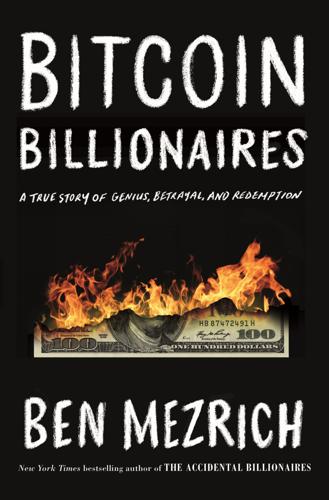
Bitcoin Billionaires: A True Story of Genius, Betrayal, and Redemption
by
Ben Mezrich
Published 20 May 2019
Charlie seemed to be so enjoying how things were going, he decided to reward himself by grabbing for a large bong. “Code is law,” Voorhees said. “Mathematical law.” “What prevents me from spending the same bitcoin twice?” Cameron asked. “If I can email the same picture to more than one person, what prevents me from doing that with my bitcoin?” “The double-spend problem,” said Voorhees. This was a unique issue for digital currency that did not exist in the physical world of cash. If you gave someone a twenty-dollar bill, you couldn’t turn around and then give another person the same twenty-dollar bill. In the digital world, however, where 1s and 0s were plentiful, there were no such physical limitations.
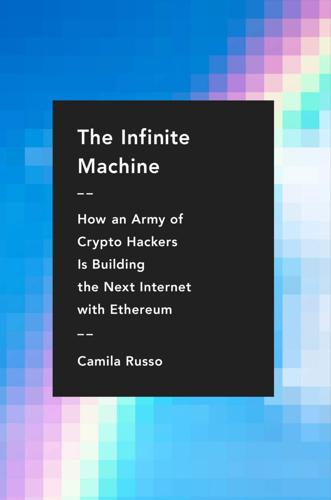
The Infinite Machine: How an Army of Crypto-Hackers Is Building the Next Internet With Ethereum
by
Camila Russo
Published 13 Jul 2020
Cypherpunks had continued incrementally improving past work until the major breakthrough came in October 2008, when an anonymous person or persons going by the name Satoshi Nakamoto emailed the group. “I’ve been working on a new electronic cash system that’s fully peer-to-peer, with no trusted third party,” the email began, and linked to a nine-page PDF that underlined how the system worked. He said he proposed solving the double-spend problem by using a “peer-to-peer network which timestamps transactions by linking them into an ongoing chain of hash-based proof-of-work.”3 In the paper titled “Bitcoin: A Peer-to-Peer Electronic Cash System,” Satoshi Nakamoto proposed a network of computers, where each computer holds the copy of the entire transaction history for the network, a ledger with what everyone owns.
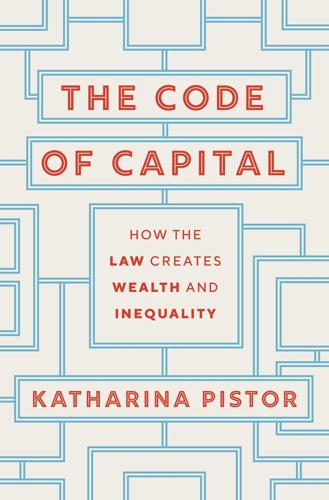
The Code of Capital: How the Law Creates Wealth and Inequality
by
Katharina Pistor
Published 27 May 2019
There is, however, one aspect in which Bitcoin departs from these other forms of private money. Bitcoin is designed as money without credit: nobody can spend Bitcoin without proof of ownership.43 The “Bitcoin Manifesto,” published by the ominous Satoshi Nakamoto, explains that a key motivation for creating Bitcoin was to solve the “double-spending problem.”44 Yet, the ability to spend money one does not have is—for better or worse—the very essence of capitalism. Other forms of private money, the notes, bills of exchange, asset-backed securities, etc., are IOUs that are all assigned and traded with the expectation that they are convertible into state money whenever needed, and hopefully at a profit; convertibility may not be guaranteed, but the promise of convertibility makes these assets attractive and finds them buyers.
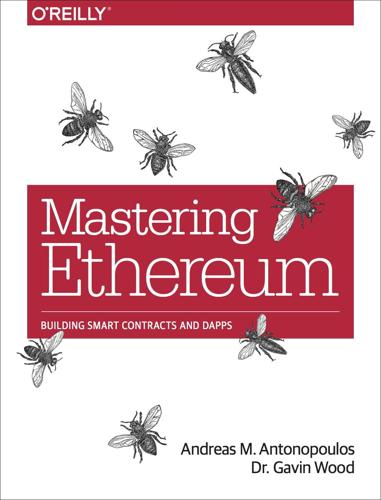
Mastering Ethereum: Building Smart Contracts and DApps
by
Andreas M. Antonopoulos
and
Gavin Wood Ph. D.
Published 23 Dec 2018
An encoding standard designed by the Ethereum developers to encode and serialize objects (data structures) of arbitrary complexity and length. Satoshi Nakamoto The name used by the person or people who designed Bitcoin, created its original reference implementation, and were the first to solve the double-spend problem for digital currency. Their real identity remains unknown. Secret key (aka private key) The secret number that allows Ethereum users to prove ownership of an account or contracts, by producing a digital signature (see “public key,” “address,” “ECDSA”). Serenity The fourth and final development stage of Ethereum.
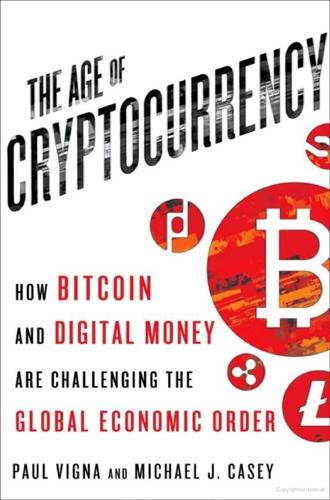
The Age of Cryptocurrency: How Bitcoin and Digital Money Are Challenging the Global Economic Order
by
Paul Vigna
and
Michael J. Casey
Published 27 Jan 2015
And then the sales pitch: “It’s completely decentralized with no server or central authority.” The people on that list, who’d heard claims like this before, had no evidence yet that Nakamoto had overcome the challenge that had felled his predecessors: preventing fraudulent transactions—the so-called double-spending problem—when no central authority is charged with authenticating transactions. As much as these people hated to admit it, you seemed to need a central authority like a bank to do that. Once again, the response to Nakamoto’s overtures was tepid. Some immediately homed in on a criticism of bitcoin that would become common: the energy it would take to harvest “bitbux” would cost more than they were worth, not to mention be environmentally disastrous.

On the Edge: The Art of Risking Everything
by
Nate Silver
Published 12 Aug 2024
A blockchain is basically just a shared, ever-lengthening digital ledger of every transaction in history in chronological order, meaning something like the following:[*10] The Times 03/Jan/2009 Chancellor on brink of second bailout for banks•••Alice-Paid-Bob-004.000BTC-On-Sept092009•••Bob-Paid-Carol-002.500-BTC-On-Sept102009•••Carol-Paid-Alice-010.000BTC-On-Sept122009 So in one sense, Nakamoto’s idea was truly radical—Bitcoins were the first digital asset that could be transferred without the approval of any government or central authority. In another sense, the problems that Nakamoto was trying to solve were relatively technical. One particularly thorny issue, outlined in his white paper, was the double spending problem. If I give you a gold coin for a loaf of bread, I can’t go and spend that same coin somewhere else. But if I were feeling sneaky, I could send the same digital coin to two places at once—say to Carol for her CryptoPunk and Bob for his Bored Ape. How to decide which transaction is valid? I’m not going to detail every aspect of Nakamoto’s clever solution, but the backbone of it is a consensus secured by what’s called “proof-of-work” mining.